How to Celebrate Your 70th Birthday—Part I: Our Trip to New Orleans
I have never had much interest in celebrating my own birthday, especially with parties, but in contemplating my 70th on December 15, 2013, because it contained the magic number 7 and also had a big fat zero at the end, I thought I should ask for something special—trips to two of my favorite places. Beth thought it was a good idea.
For the first trip, I wanted to go with my four sons (a trip for the guys) to New Orleans. I have visited New Orleans several times, always for a conference but never entirely for pleasure; yet every visit has been an absolute delight. I love the look of the French Quarter, with its narrow streets and French (well as much Spanish) architecture, its superb food, and of course the jazz. On several trips, I thought how much I would enjoy being there with my sons, who had never visited New Orleans, to experience their reactions. I always thought they would like it. I told my sons I would pay for everything if they could get there between Christmas and New Years of 2013. Christopher, Steven, John, and Ethan jumped at the opportunity.
For the second trip, during the first part of January, 2014, I wanted to go with Beth to Santa Fe. I have also visited Santa Fe several times, back when it wasn’t so much an artists’ or foodies’ destination and since as it has developed into an artsy, touristy place, and I have loved it every time. Beth had no problem agreeing to this visit. She is a sucker for Mexican food and turquoise jewelry.
I went to New Orleans for the food and music; I went to Santa Fe for the food and art; and of course to both for the company of some of my favorite people.
Part One: New Orleans
My sons came from Phoenix, Seattle and Boston to rendezvous at the New Orleans’ airport. Christopher was the last to arrive; so the rest of us made a sign with his name on it and stood by the chauffeurs with their signs waiting for their clients. We checked into an old hotel on Decatur Street, the Bienville House, smack dab in the middle of the French Quarter and a stone’s throw from the original House of Blues and a tempting praline candy shop. We had two rooms. We wasted little time before setting out to explore the Quarter.
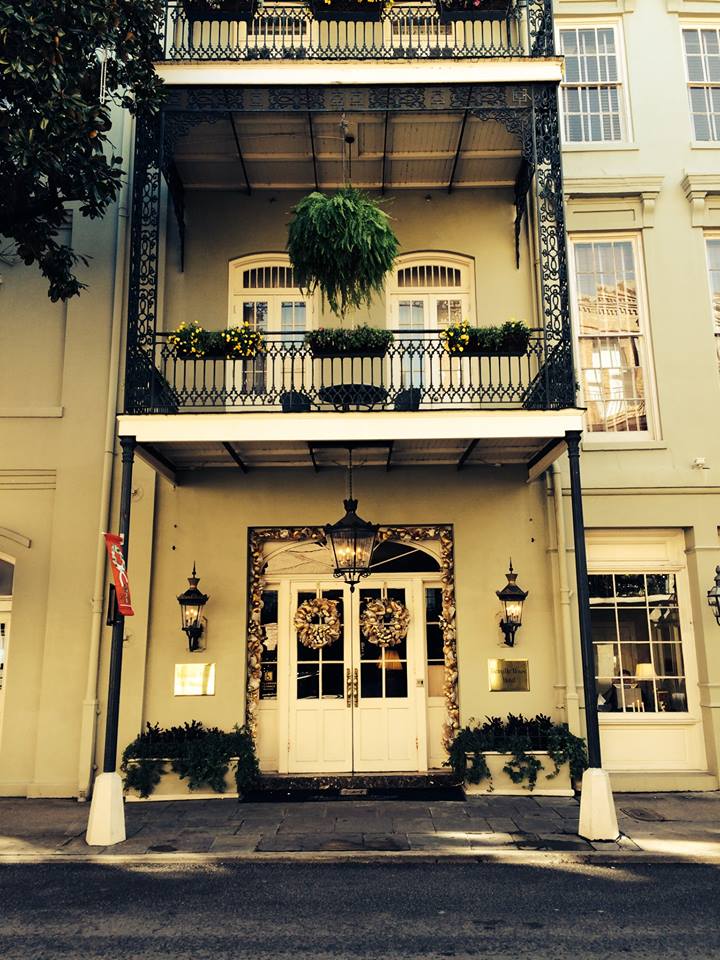
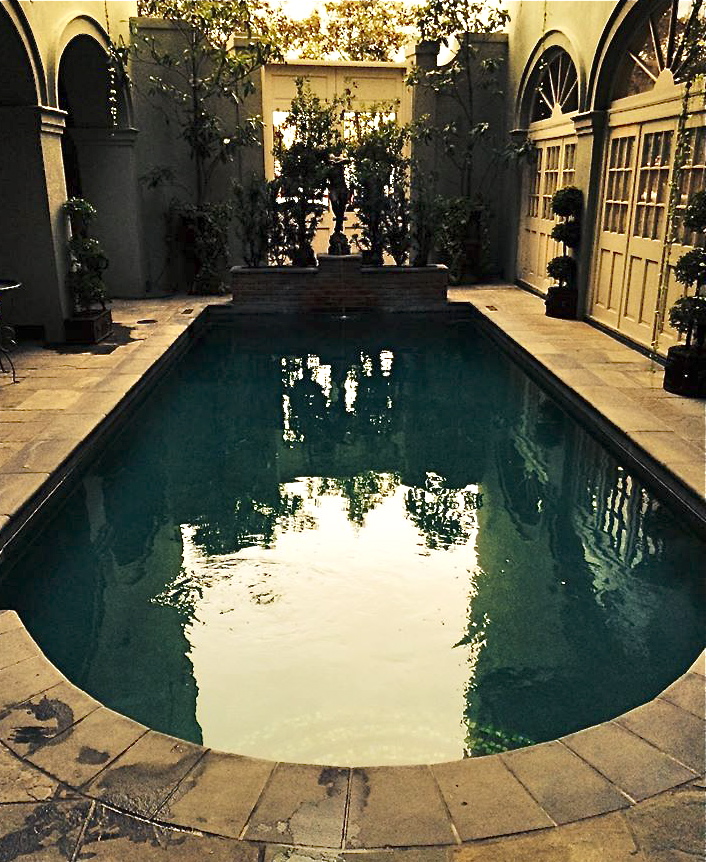
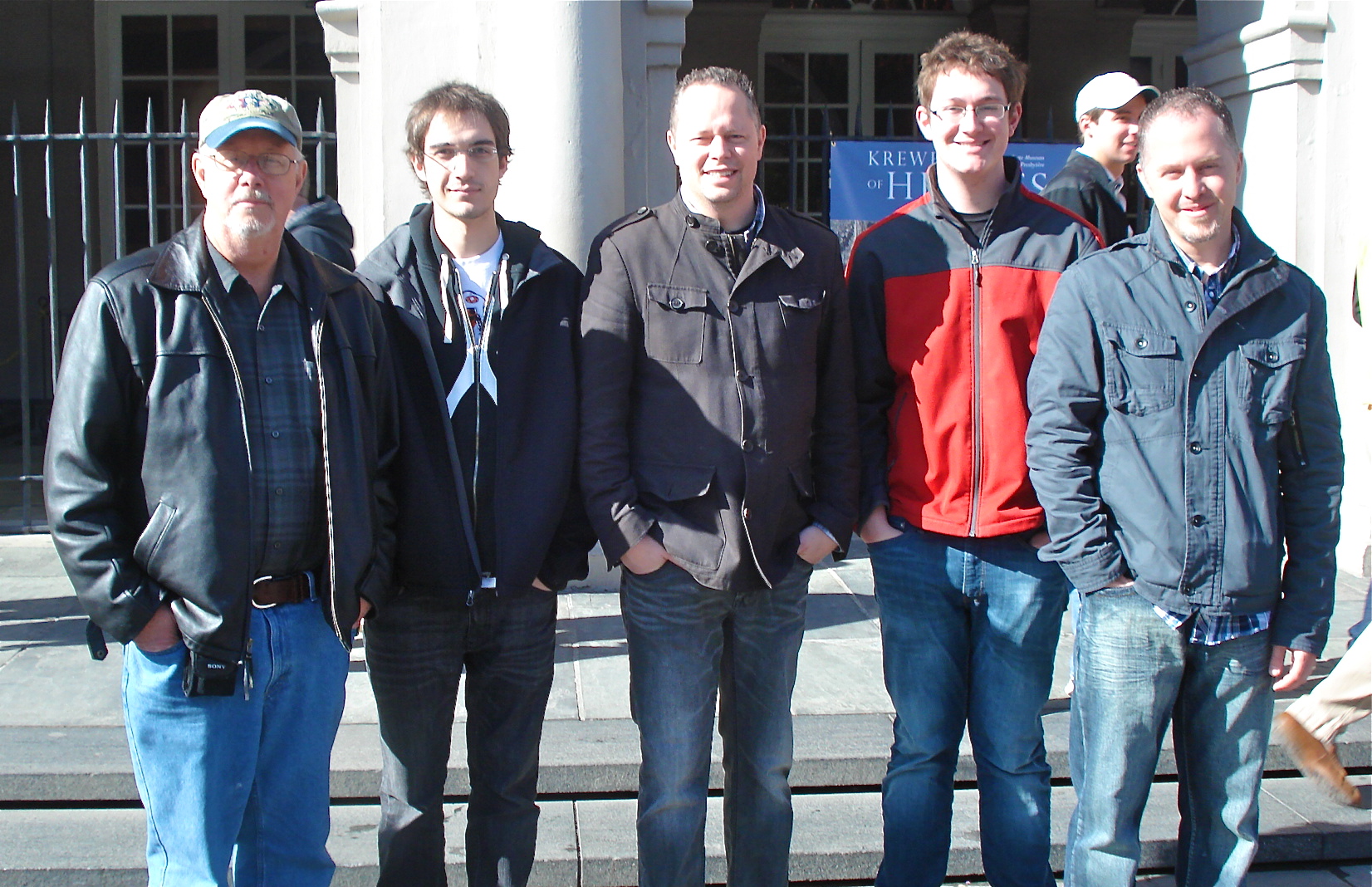
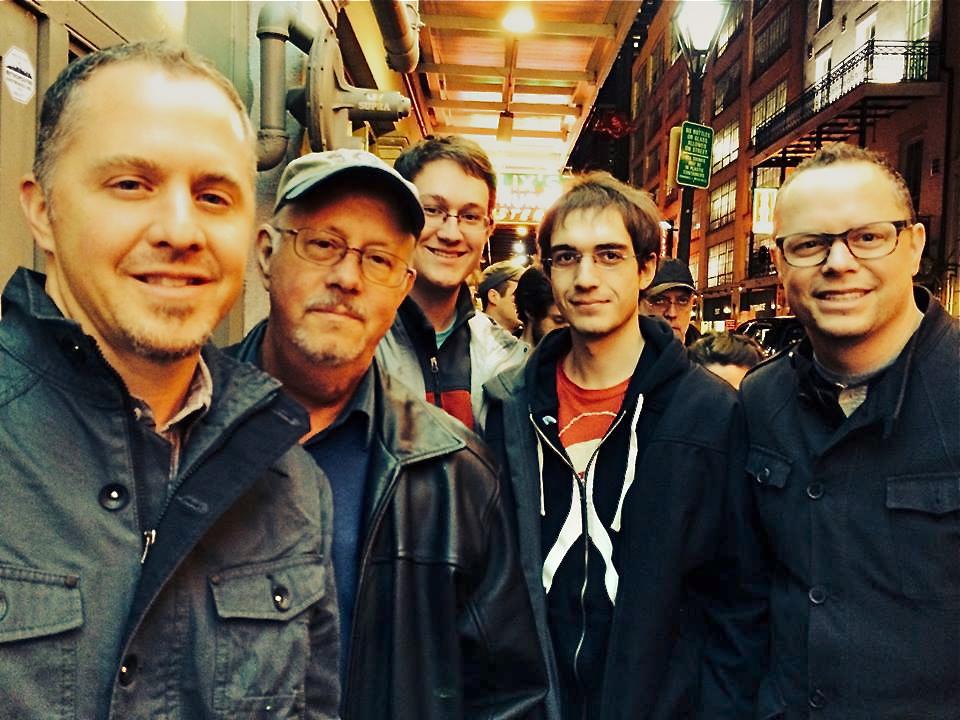
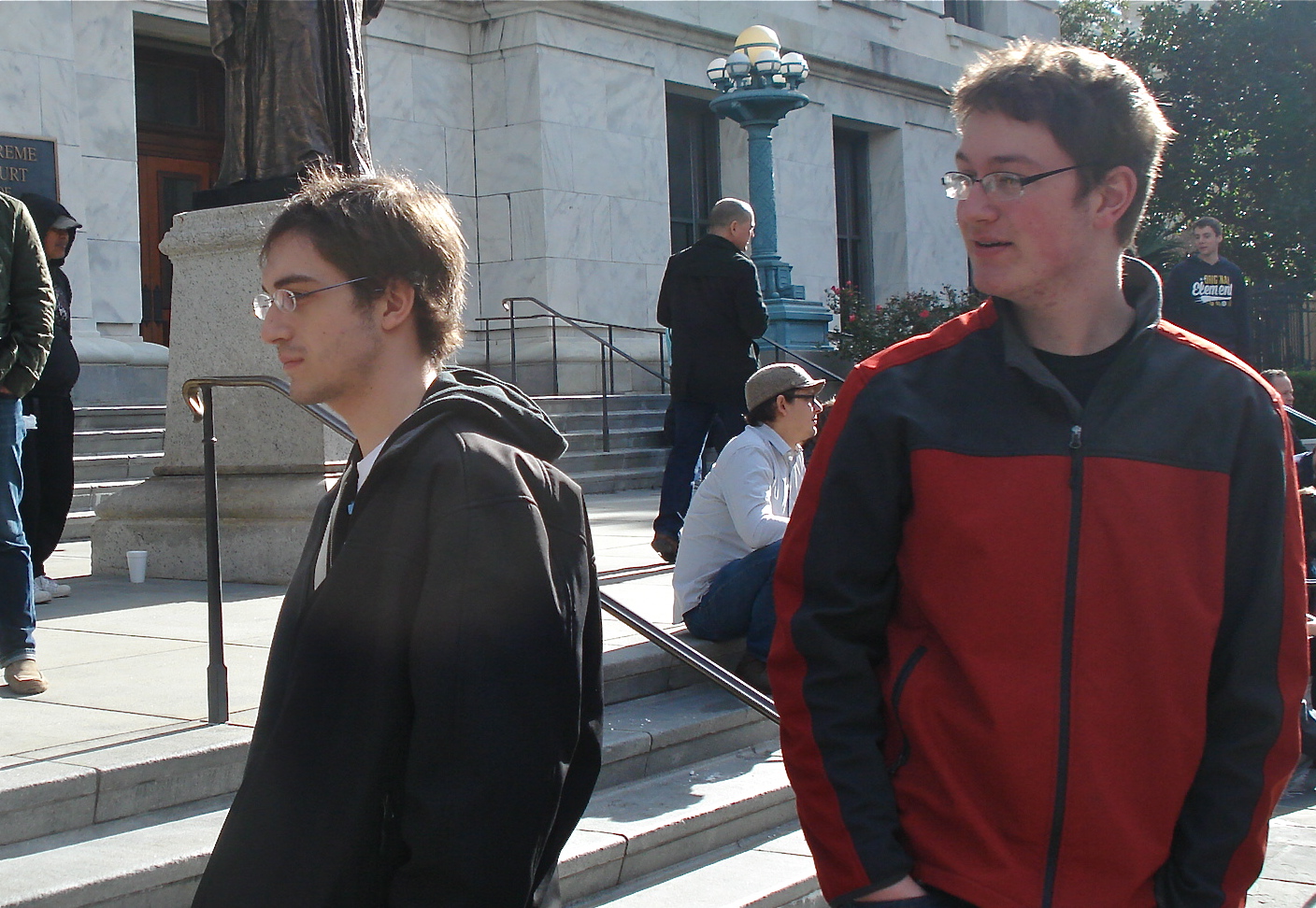
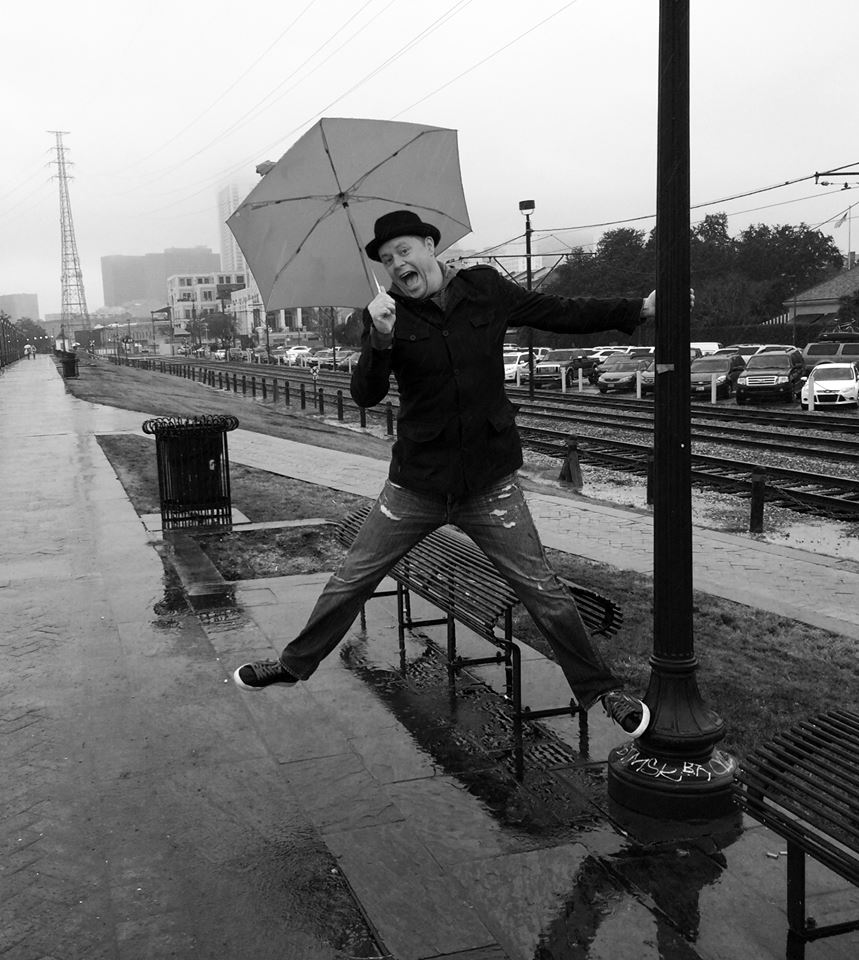
What a strange place, New Orleans. It is southern, but it is unlike anywhere else in the South, anywhere else anywhere. It makes sense that long ago, first the Native Americans and then the Spanish and then the French would build a city near the mouth of the Mississippi River, a river that continuously dumps tons of silt and soil into the Gulf of Mexico like a huge digestive tract with diarrhea; a river that along with the silt brings down all the produce, products and people from the hinterlands of the continent. Who controlled the mouth of that great river, controlled the bulk of the commerce. But how in the world did those original settlers have the misfortune to point to a little bluff at a crescent bend in the river and say, “Let’s build there,” only to discover later that a good share of their city would lie below sea level? Oh well, what did they know? Maybe it was dry when they made the choice. But the below sea level part has caused problems ever since.
Much of the conversation in New Orleans still revolves around the devastation from Hurricane Katrina and the rebuilding they have had to do to keep their city and protect it. To keep New Orleans from turning into another bayou, they long ago invented a pumping system, still used, to pump a zillion gallons of water out of the French Quarter every day. They built levees (dikes) along the river and around other bodies of water to keep their city somewhat dry. We walked along the levee to look down at the French Quarter below on one side and the Mississippi down below on the other side, but not quite so low. As is typically the case, it rained part of the time we were there. It is New Orleans; get used to it. On top of the levee, Steven did his impression of “Singing in the Rain.”
As New Orleans developed from the confluence of intersecting cultures—the Native Americans, the Spanish, with Caribbean influences, the French, Canadian French refugees, African slaves, and free Africans, Creole mixes, and last of all Anglo Americans, there also developed a lucrative pirate enterprise that had its headquarters out in the Delta. In the early 1800s, one Jean Lafitte, with his brother, Pierre, took over the pirate towns and made them a thriving business in smuggled goods and stolen merchandise that the people of New Orleans were willing to purchase. The story goes that he was a dandy—well dressed, sophisticated, a lady’s man, a gambler, a charming fellow all around. But he was also a tough, cutthroat crime boss, buccaneer style. As fate would have it, this legendary, beloved, nasty villain ended up working for the American armed forces during the War of 1812 and helped Andrew Jackson hold off the British Navy from taking New Orleans. (After all, Lafitte was also a brilliant sea captain who knew his way around the labyrinthine delta.) Thus he went down in history and legend as a rogue and a hero, probably a perfect hero for the likes of New Orleans. We visited his blacksmith shop near the end of Bourbon Street, his front for his illicit businesses. It is now a tame coffee shop.
That first evening, we headed up to nearby Bourbon Street. The first thing we ran into was a raucous brass band, extremely loud, and better dancers than they were musicians. But they did have a tuba player (actually a sousaphone). Steven had been talking about bringing his tuba. (He doesn’t really have one, nor can he play one, but maybe he could borrow this one.) As we walked along Bourbon Street, it got ever more crowded and noisy, with people talking, street performers, barkers for strip clubs, people selling drinks on the street, music coming out of most venues (and what a mix: New Orleans jazz, zydeco, blues, rock--one band seemingly trying to cancel out the next). I think my sons were overwhelmed. They liked it, but they were overwhelmed. They liked the narrow streets and the music and the sights and sounds. Christopher said that it was what he expected but more of it—New Orleans from his vision but on steroids. It was bigger than they expected but also smaller.New Orleans does indeed hawk a strange kind of swagger and vice. From the early days of brothels to the current abundance of music, strip places, anything goes atmosphere, and loud music, there is a controlled, civilized side to it. Families walk by with their children. Bouncers are careful to prohibit minors from entering the clubs and venues. Police unobtrusively patrol and look over everything. Several years ago when people tried to bring legalized gambling and casinos to New Orleans, a good share of the citizens and government officials fought the gambling because it would corrupt their city. What? Gambling would corrupt sin city? They said, “New Orleans has its own form of vice, and we don’t want it changed by this evil, outside influence.” Somehow that does catch the spirit of vice in New Orleans. The gambling and casinos did win out, however, but they were not allowed in the French Quarter proper.
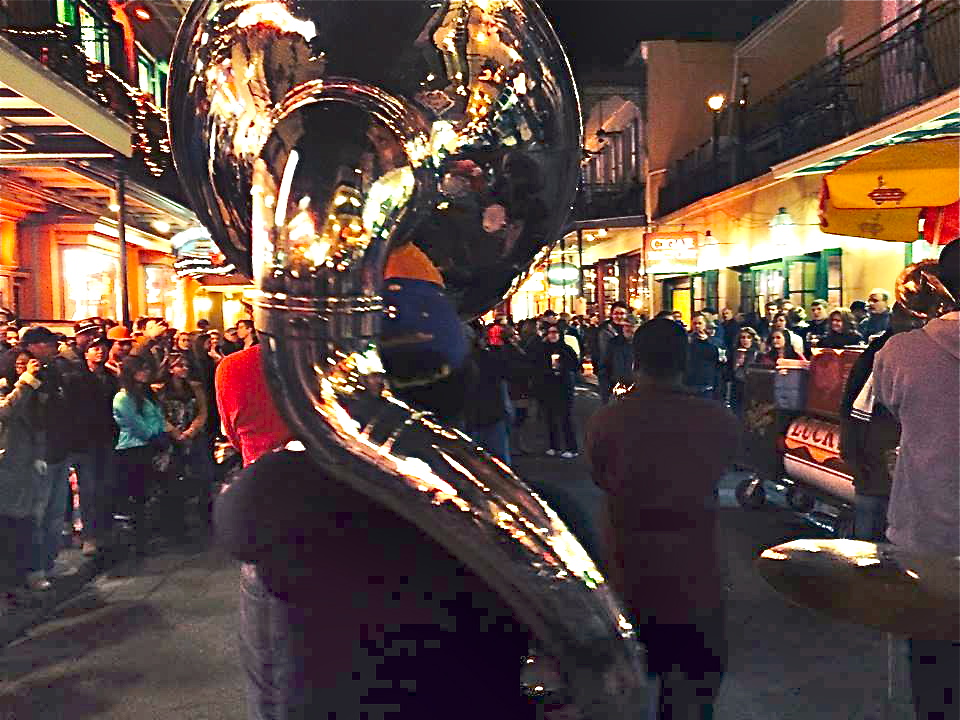
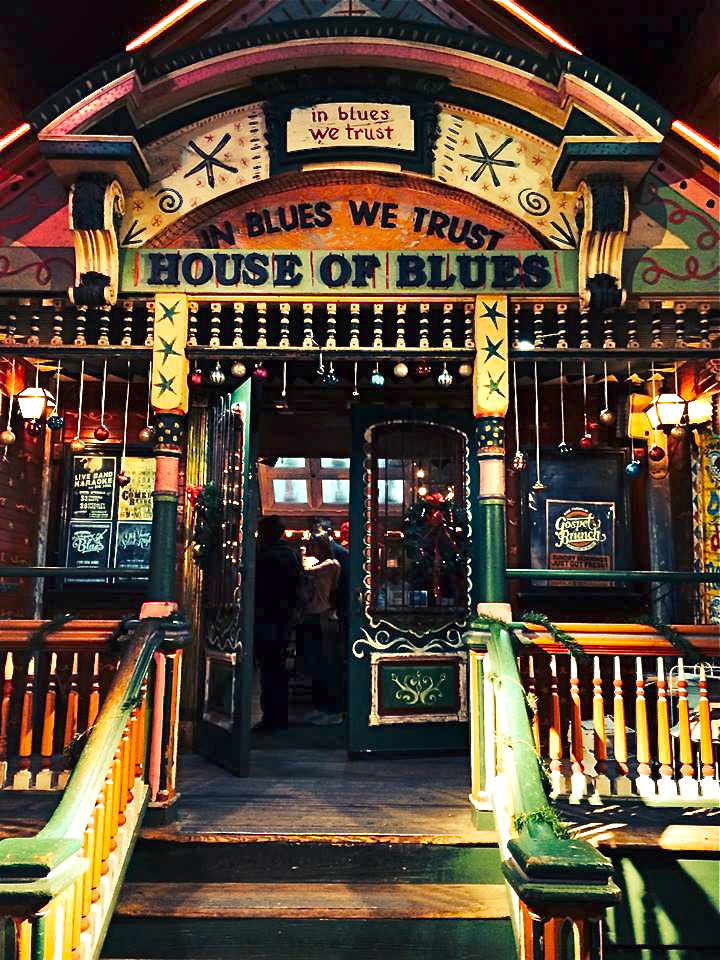
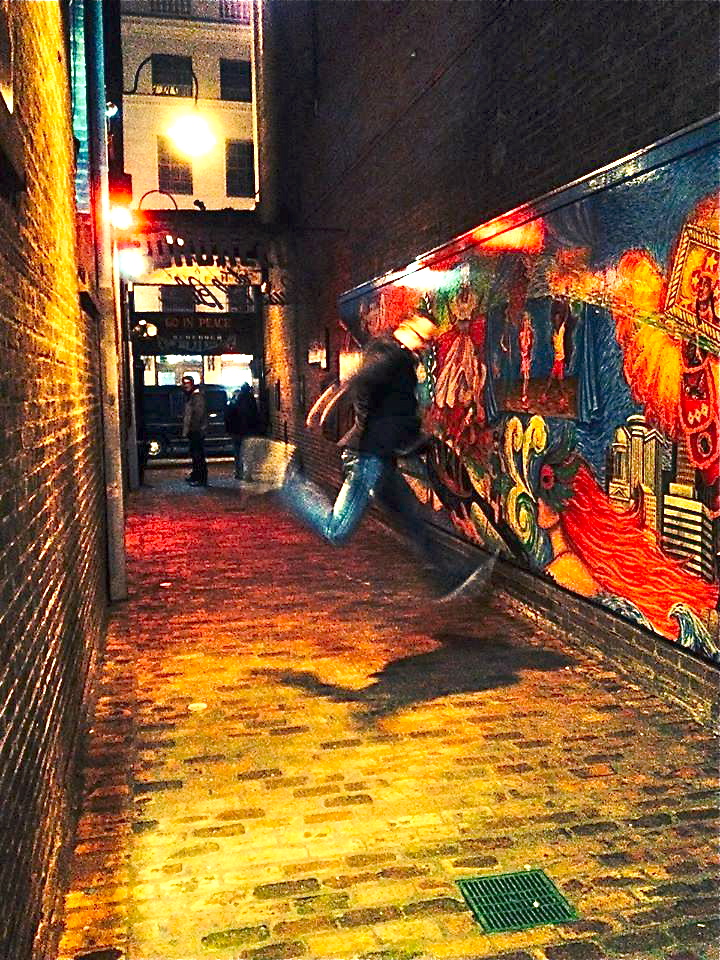
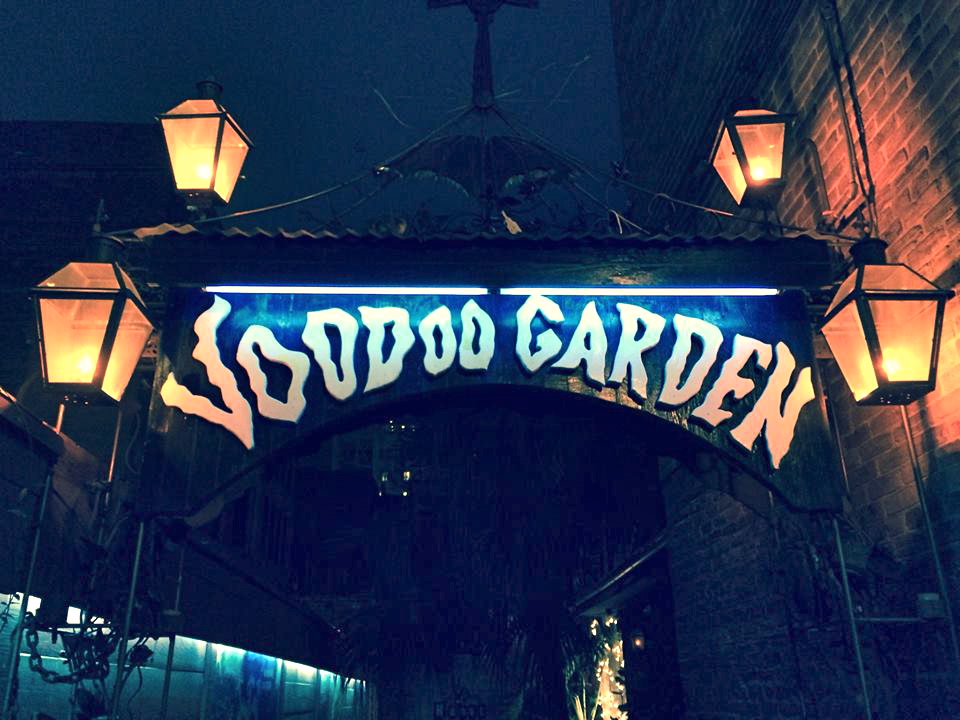
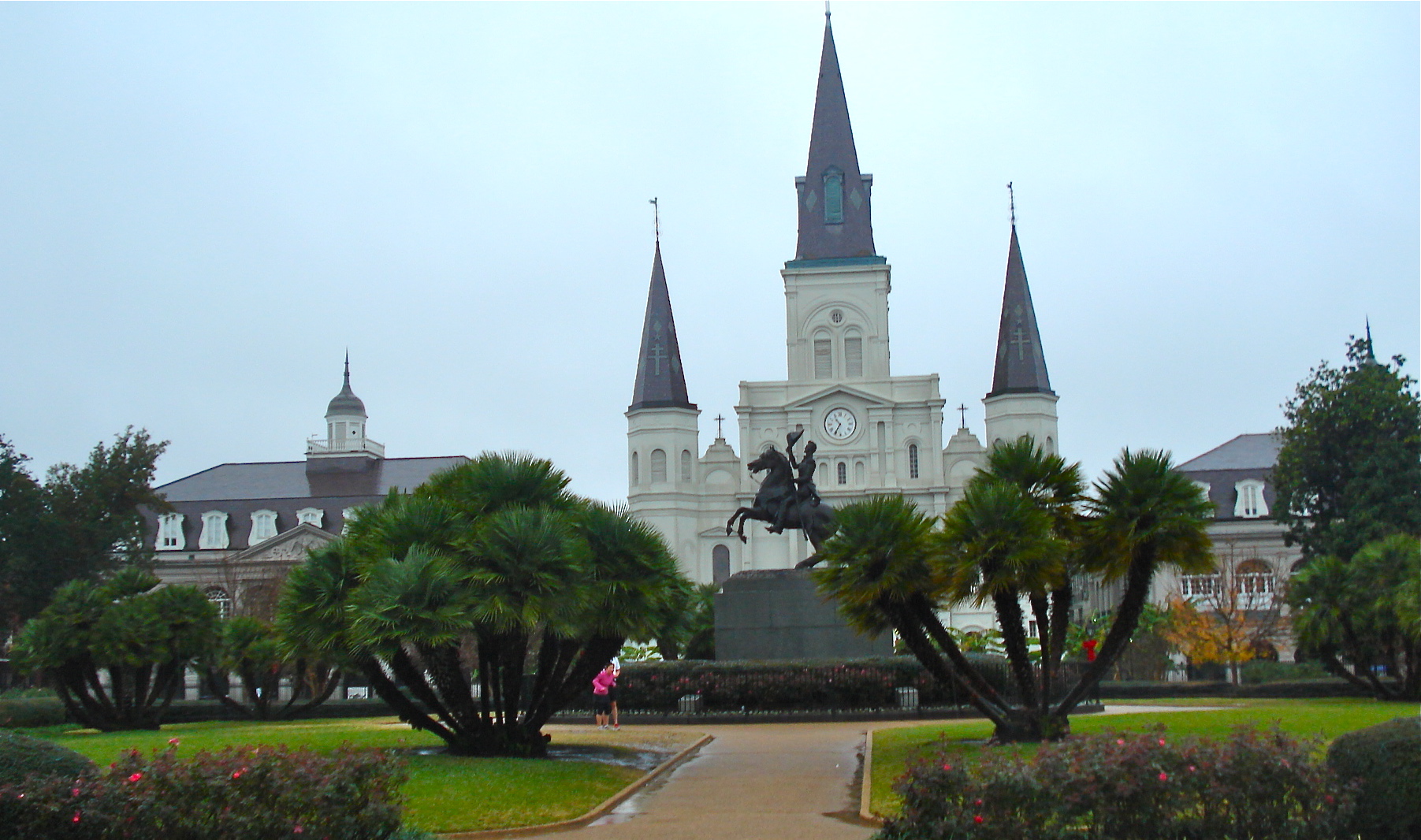
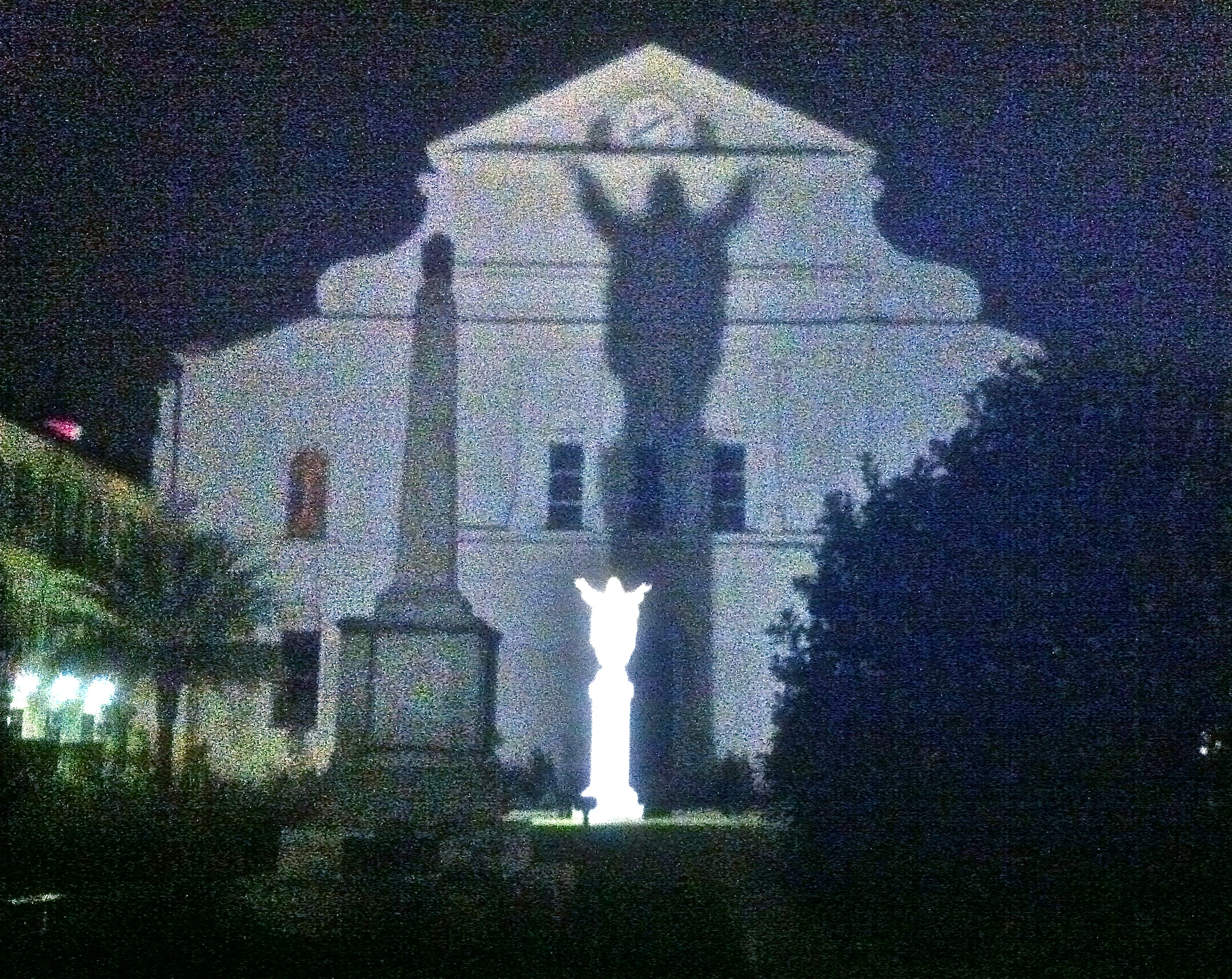
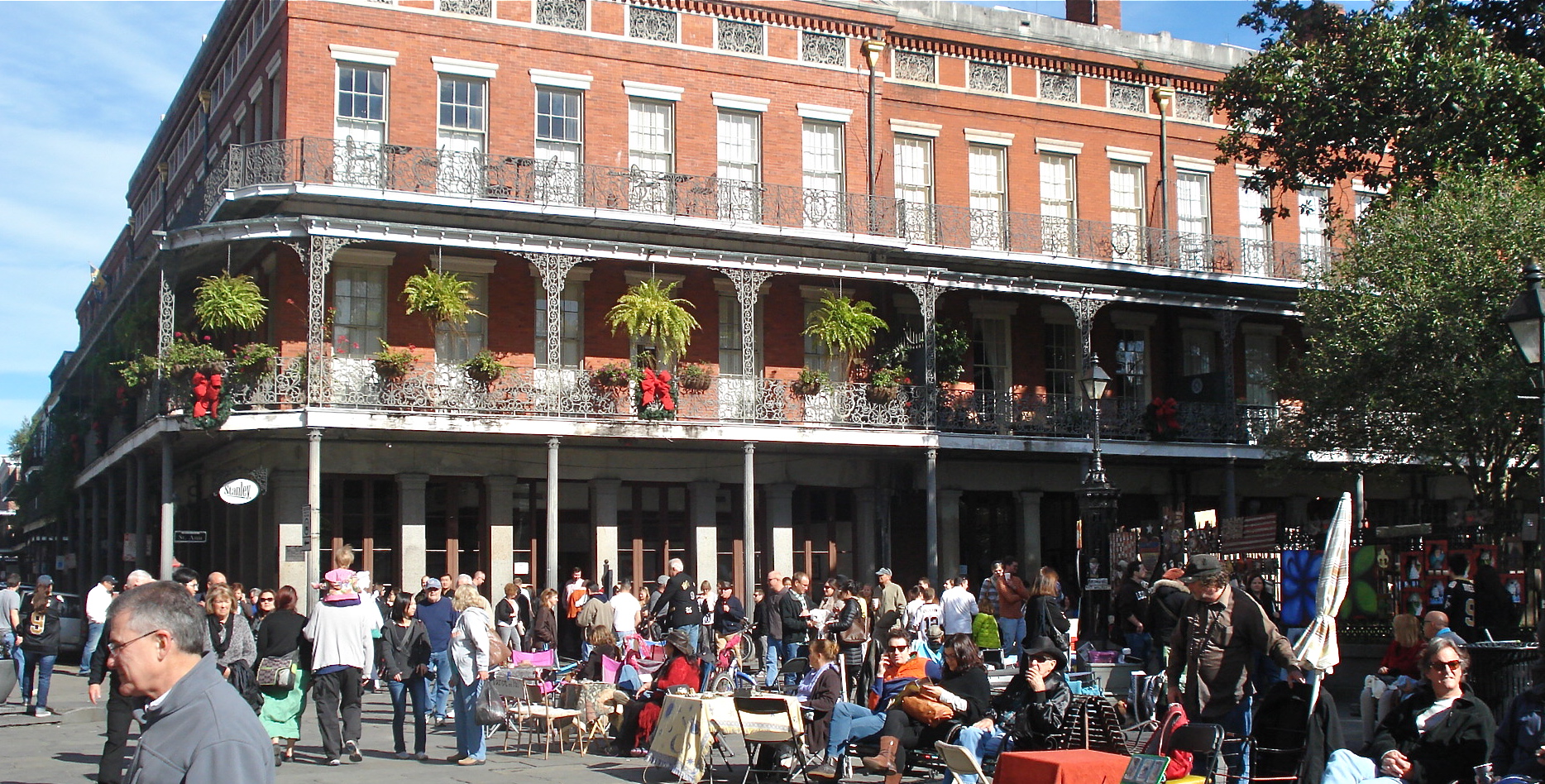
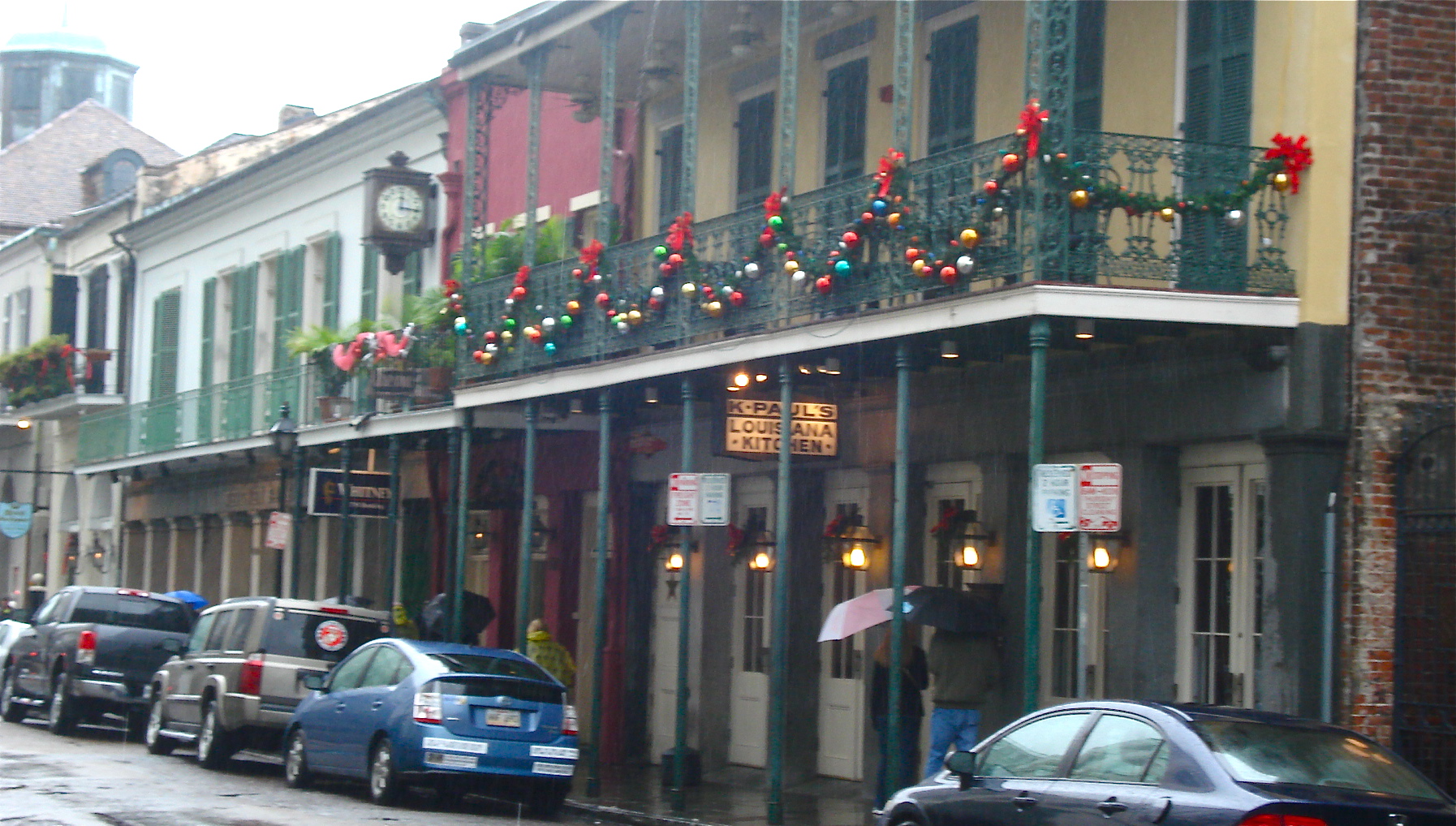
The Food
Ah, the food—a primary reason for our trip. It did indeed exceed our expectations. I had the best gumbo ever, at three locations, each better than the last. Let me mention four memorable meals, in addition to the gumbo. The first night, we went to Felix’s Oyster House. The wait was not too long. We had oysters three ways: raw on the half shell, char-grilled, and fried in po-boy sandwiches. We had other stuff as well. All the oysters were excellent, big, plump, tasty, but we all voted the char-grilled to be the best. They will go down in memory.
Afterwards, we had to go to Café du Monde to have beignets, French style, fried dough that surpasses all other fried dough in the world. At Café du Monde the procedure is to cover them in enough powdered sugar to spread all over one’s face and clothes, all over the table, and all over the floor around the table. But it is worth it.
While waiting in line for the restroom, Christopher and I struck up a conversation with a friendly high school student from Houston. He was traumatized by the wildness he saw around him. I got the impression that he had led a sheltered life. But he said one thing that I was unable to process. He said that it was so dry in New Orleans that he felt his nose and skin cracking; he wasn’t used to it. Mind you, it had been raining that evening. I have never been to New Orleans when it felt dry. Now I know that Houston is humid, but they must have some kind of high level of humidity if New Orleans on a rainy night can crack this guy’s nose.
The next morning we went to one of my all-time favorite dives called Mother’s. The line was predictably long. They are famous for their baked ham and po-boys, particularly the debris sandwich, consisting of roast beef with all the juice, drippings and other tasty carcinogens. Despite the famous debris sandwich, I could not help myself and once again had to have another fried oyster po-boy. Every time I go to New Orleans, I have to go to Mother’s.
In the end, we all voted that our best dinner was at Red Fish Grill, out of this world seafood and creole cooking, served by a pleasantly funny and surly waitress.
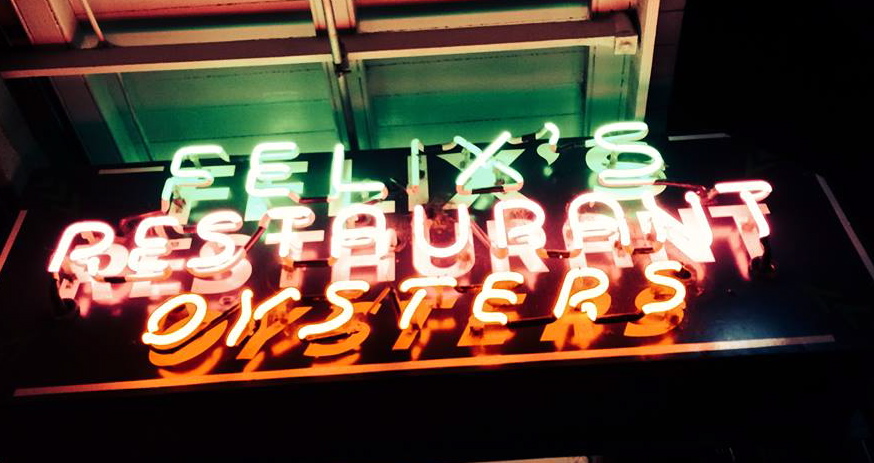
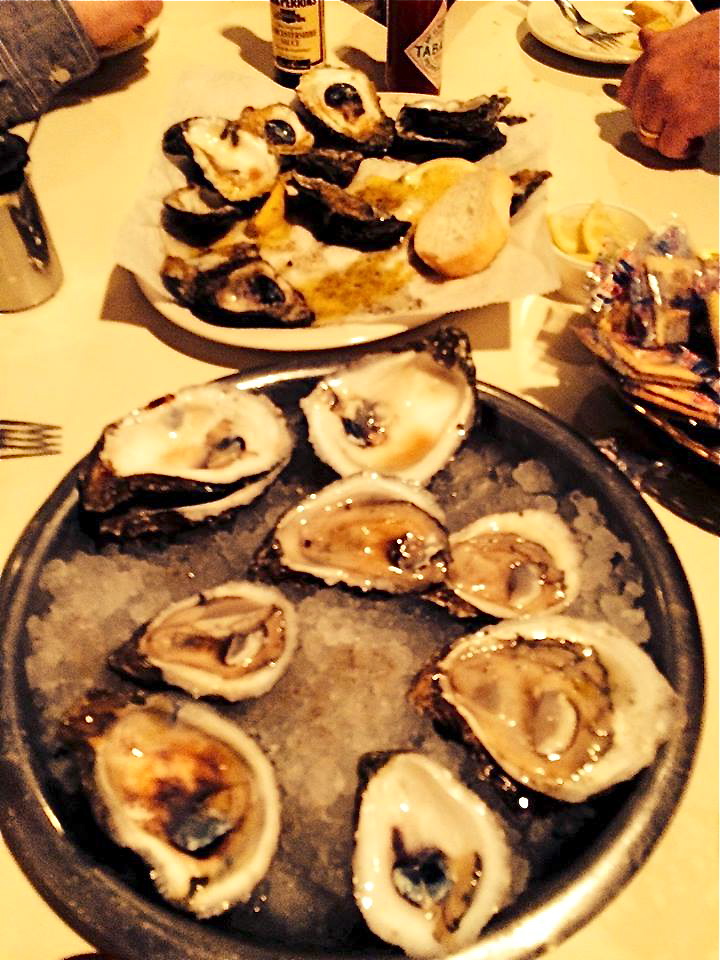
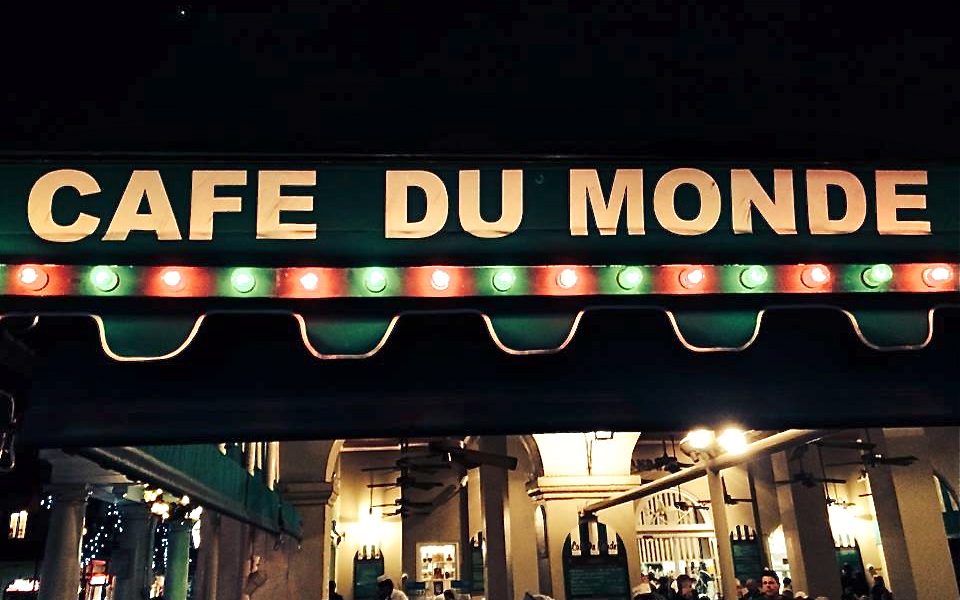
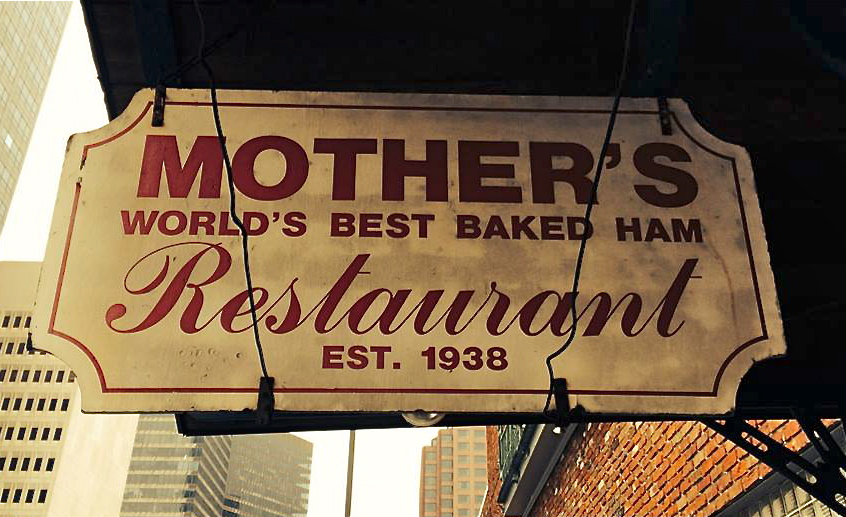
The Music
The second main reason for our presence in the city was the music, particularly the jazz. You see, in our family, jazz reigns supreme. In New Orleans jazz also reigns supreme; so there is a match here. (As a caveat, we tend to like modern jazz, which one would be hard pressed to hear in New Orleans, but sometimes it feels good to listen to that old, traditional, New Orleans style jazz.)
As you probably know, one original influence on the birth of jazz in New Orleans and the surrounding delta country was the Gospel hymns of the region. For example, for the famous jazz funerals, a marching band would play a slow dirge-like hymn as they led the mourners with the coffin from the church to the cemetery. Folks would thus honor the deceased and feel sad at losing him or her. However, on the way back, after dropping off the coffin, the band would celebrate that the person was in a better place, and, hey, life must go on, so let’s enjoy it. The tempo was up, and the people would strut and dance.
We did hear a street band play one of the original funeral hymns, When the Saints Go Marching In, slow and sad in one direction and swinging on the way back. Usually, you only hear the words to the first verse of that hymn and maybe don’t even realize what it is. Once in New Orleans, I heard the many verses sung. This old hymn refers to the Book of Revelations and the end of the world when 144,000 chosen people will supposedly march up to be with the returning Messiah. The song refers to the dire prophesies of what would happen in those days and tells how the singers of the hymn wanted to be in the number of saints that would be caught up into heaven. Here are the verses I heard:
Oh, when the saints go marching in
Oh, when the saints go marching in
I want to be in that number
When the saints go marching in.
Oh, when the drums begin to bang
Oh, when the drums begin to bang
I want to be in that number
When the saints go marching in.
Oh, when the stars fall from the sky
Oh, when the stars fall from the sky
I want to be in that number
When the saints go marching in.
Oh, when the moon turns red with blood
Oh, when the moon turns red with blood
I want to be in that number
When the saints go marching in.
Oh, when the trumpet sounds its call
Oh, when the trumpet sounds it call
I want to be in that number
When the saints go marching in.
Oh, when the fire begins to blaze
Oh, when the fire begins to blaze
I want to be in that number
When the saints go marching in.
Oh, when the saints go marching in
Oh, when the saints go marching in
Lord, I want to be in that number
When the saints go marching in.
Of course, New Orleans is known for its over-the-top celebrations of Mardi Graz, just before Lent begins. During that time, there are many parades sponsored by different organizations and social clubs. However, I don’t think they need much of an excuse to put together a parade any time of year. When a club puts on a parade, the members of the club and the band march along comprising the “first line.” But then others, not members of the club, join in the celebration along the street or march along behind. Often they twirl their parasols or waive their white handkerchiefs as they march along. This group became known as the famous “second line,” and “second lining” has become a venerated tradition, even to this day. These parades are marches, but in New Orleans, the second line doesn’t march, nor does it dance sporadically; rather, it struts, heartfelt and with soul. There is an old, traditional jazz standard from New Orleans, which is actually a 12-bar blues. Its title is Second Line. Hear it if you can, especially if you can hear it played by Michael White, as I did on my last visit, and see if you can picture yourself strutting along.
The last time I visited New Orleans, I witnessed two parades. The first might have been a club parade, as the first line behind the band had parasols. The second line that followed waived their white handkerchiefs. The second parade formed outside a church where there had just been a wedding. Directly following the band strutted the bride and groom and the immediate wedding party. Folks helping with the wedding handed all the invited guests white parasols, and they marched off to happy music through the streets of the French quarter. The second line followed with their handkerchiefs. I had hoped that we could catch a parade on this visit, but we had no such luck.
OK, so we didn’t get to see or hear a parade or jazz funeral, but we did see and hear plenty of street musicians. In New Orleans, just like anywhere you go and hear street musicians, some bring tears to your eyes, and I don’t mean that in a good way, and others are a delight to listen to. The difference is, in New Orleans there are simply more street musicians than anywhere else. They seemed to be spread throughout the French Quarter, from morning until night, but they were concentrated most heavily on Royal Street and in front of St. Louis Cathedral on Jackson Square. We heard cajun-zydeco bands, blues bands, and of course jazz bands. We even heard a country, hillbilly band.
One of my favorite groups consisted of three brothers who lined up to play tightly arranged, three-part, trumpet pieces, and who took their music quite seriously.
The best band of all was led by Doreen Ketchens on clarinet, with her husband on sousaphone, and accompanied by a trombonist, a guitarist, and a trumpet player. We learned that she is famous on the streets of the Quarter--she owns them. One would be hard put to hear better clarinet jazz music anywhere. For her solos, she started out low and calm and soared ever higher and became more involved, in a trance like state. By the end, all of us were carried away with her music. I didn’t want it to end. Before I left for our trip, my friend, Bill, warned me not to take my sons to the House of the Rising Sun, but on her solo on that very piece, I think we all ended up there. I wish I could hear her every day.
Late one night, on our way back to the hotel from listening to jazz on Frenchmen Street, just to the side of the Quarter, which seems to have become the jazz epicenter, we walked past a trio of street musicians on a dark corner with nobody else around. One of them asked us humbly, “Would you like to hear a song?” I felt sorry for them, and I said that indeed we would. So they played a long blues for us, perhaps the worst group we heard on the streets. They consisted of a guitarist with a broken down guitar, a banjo and harmonica player, and a wash-tub bass player. Wash-tub bass is about as primitive as you can get. You too could play one. You drill a hole in a large, round, metal wash tub or bucket, stick a long broom handle into the hole, and tighten a string from a nail at the bottom of the broom handle to a nail at the top. You get different pitches by holding down the string but also bending the handle back and forth to tighten the string. It really doesn’t produce notes as most of us would define them, but it can give a good walking bass beat to the tune. After they finished, I asked them if street musicians in New Orleans needed a permit to play on the street. They misunderstood me. The guitarist answered, “Oh we have someone who takes care of us and gives us a place to live and something to eat.” Hmm. We gave them $10.
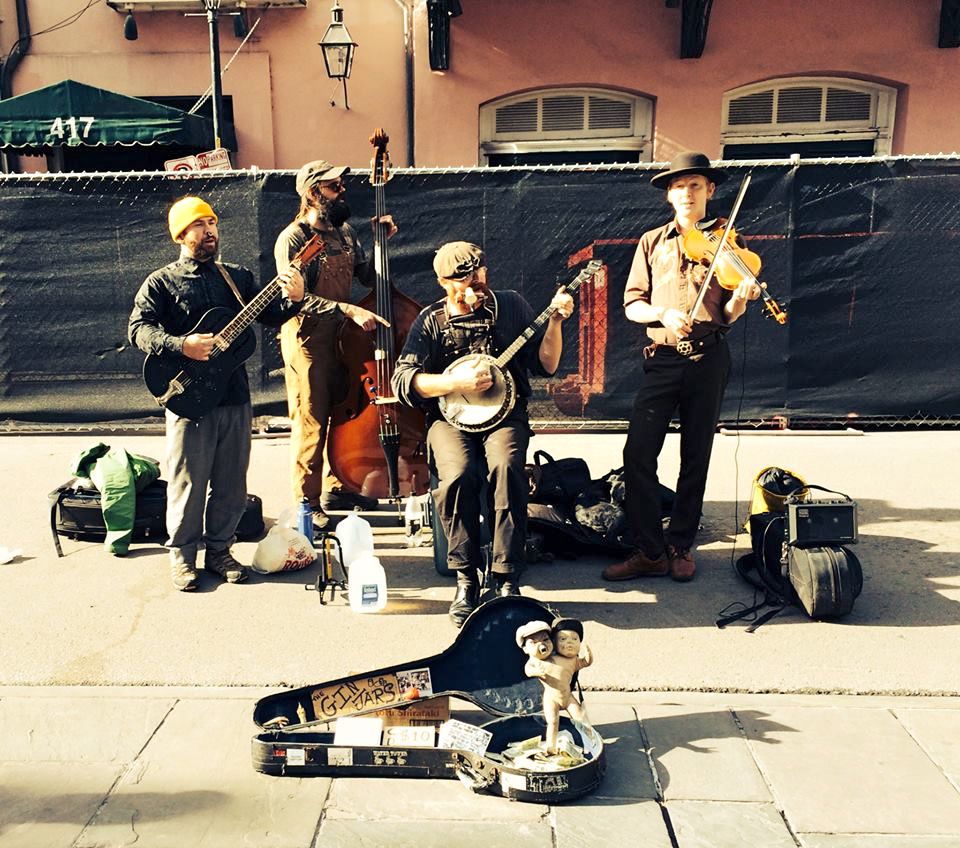
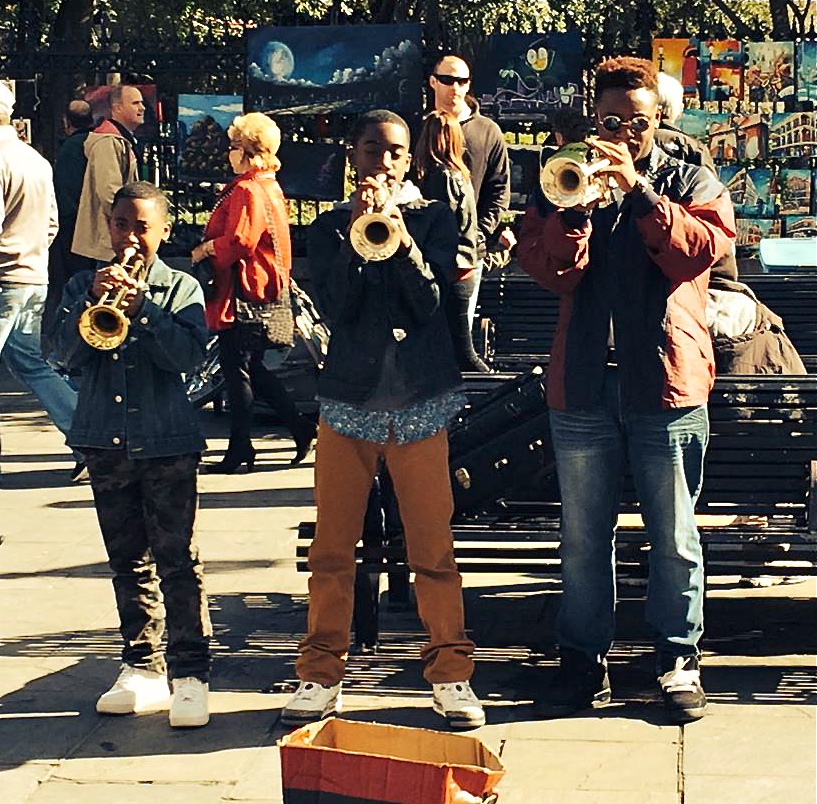
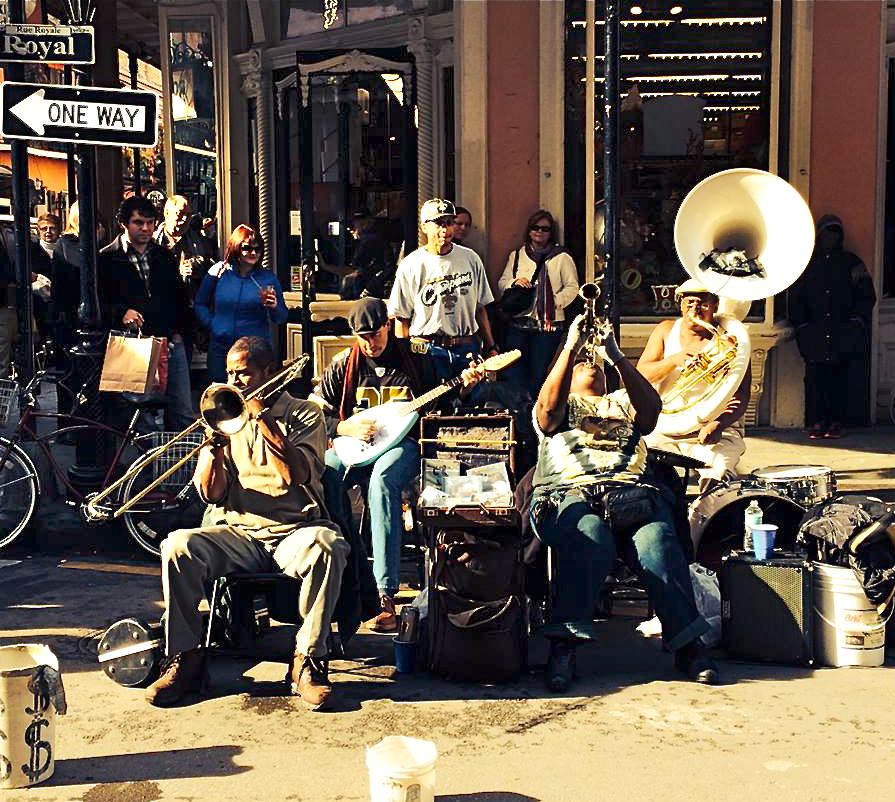
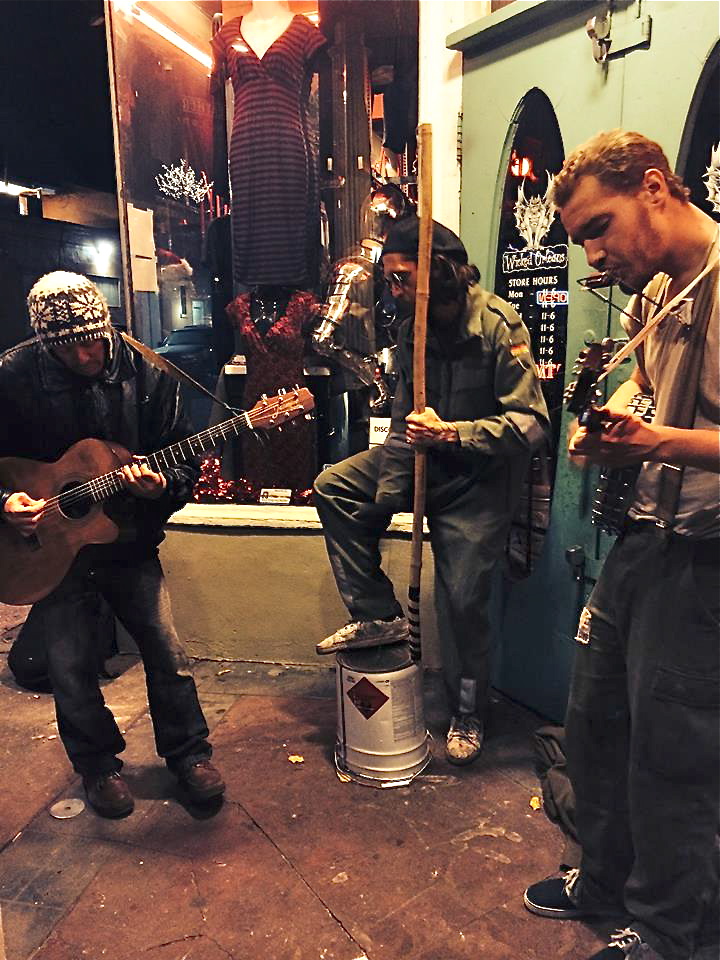
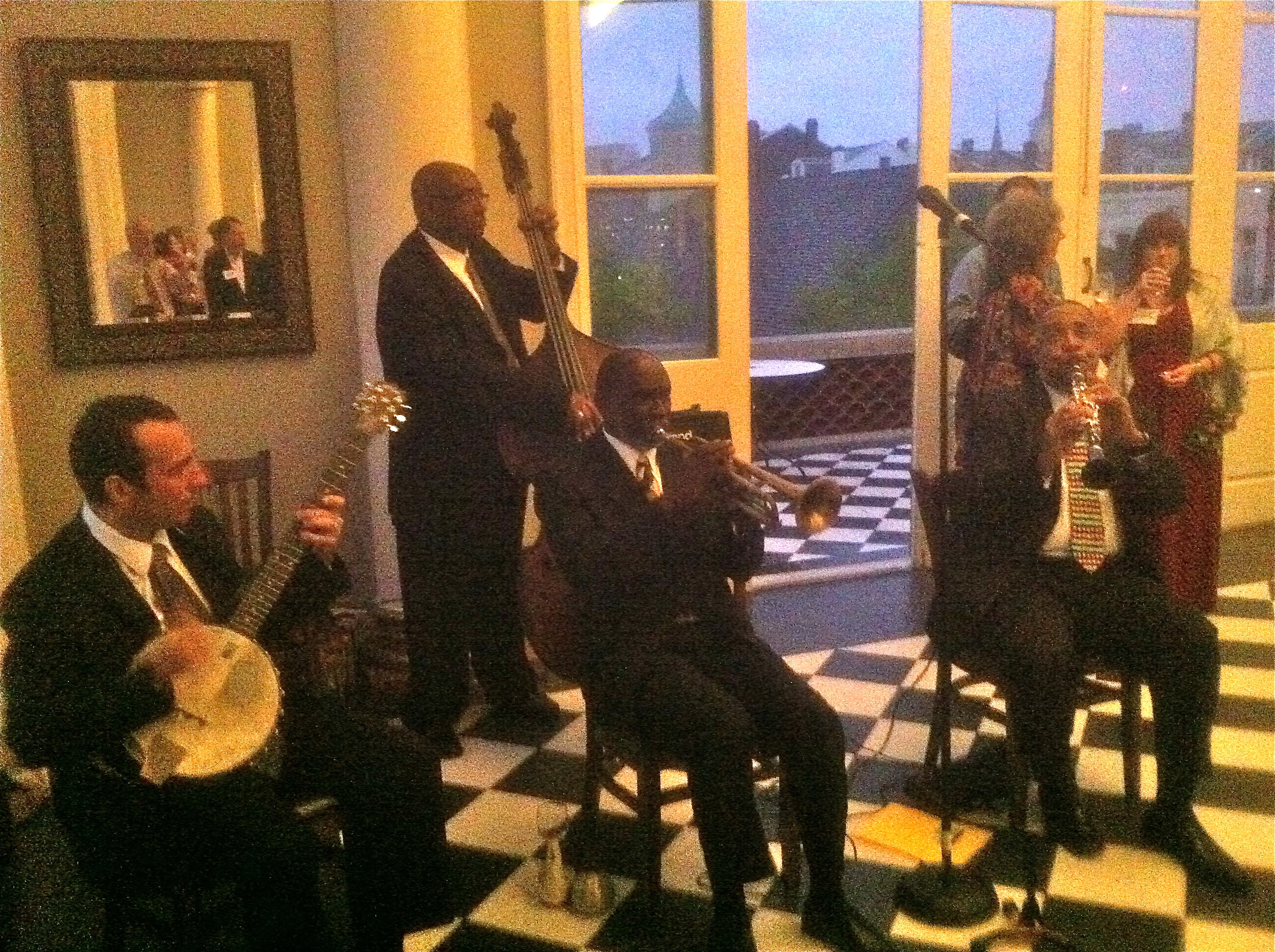
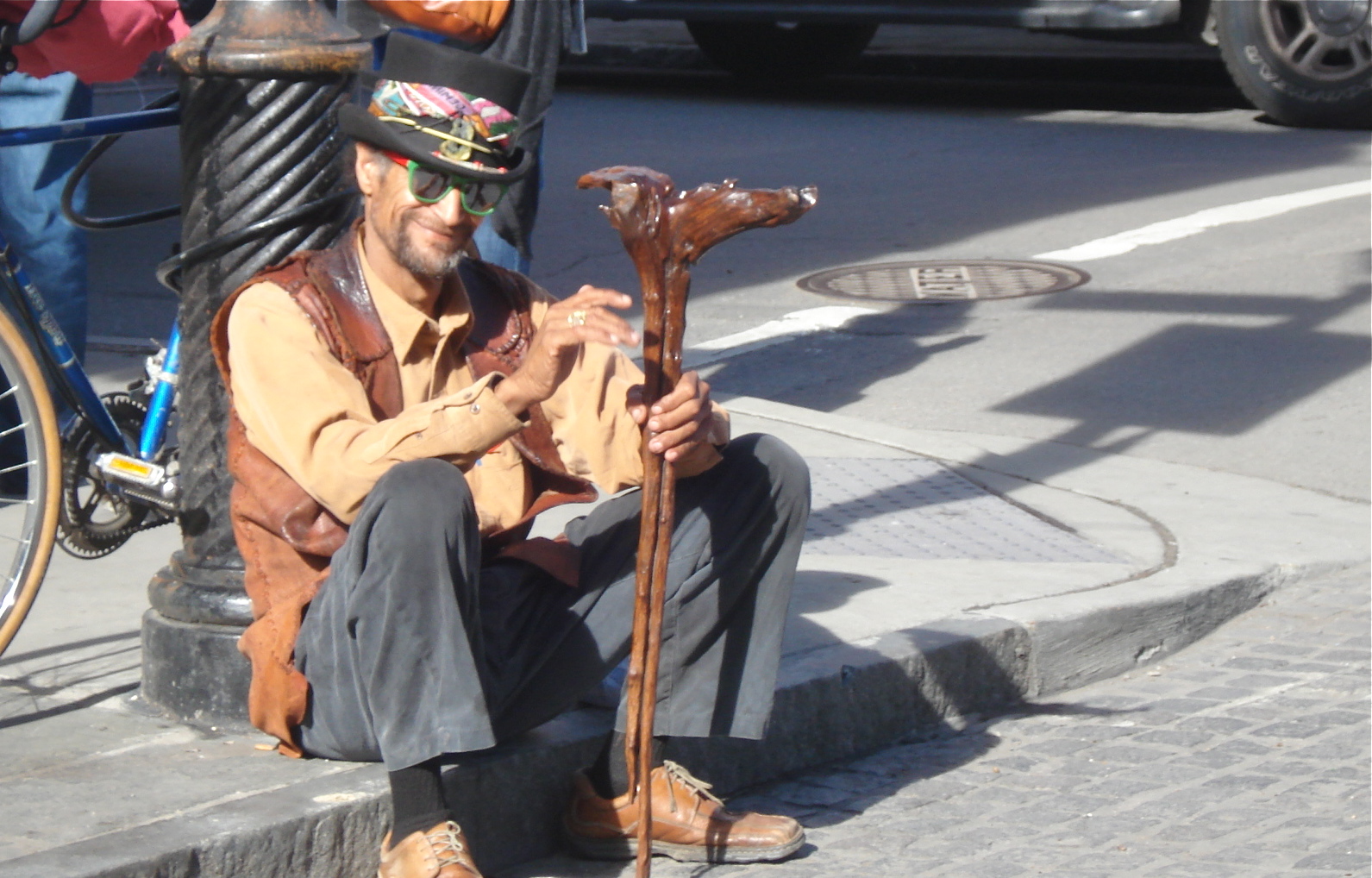
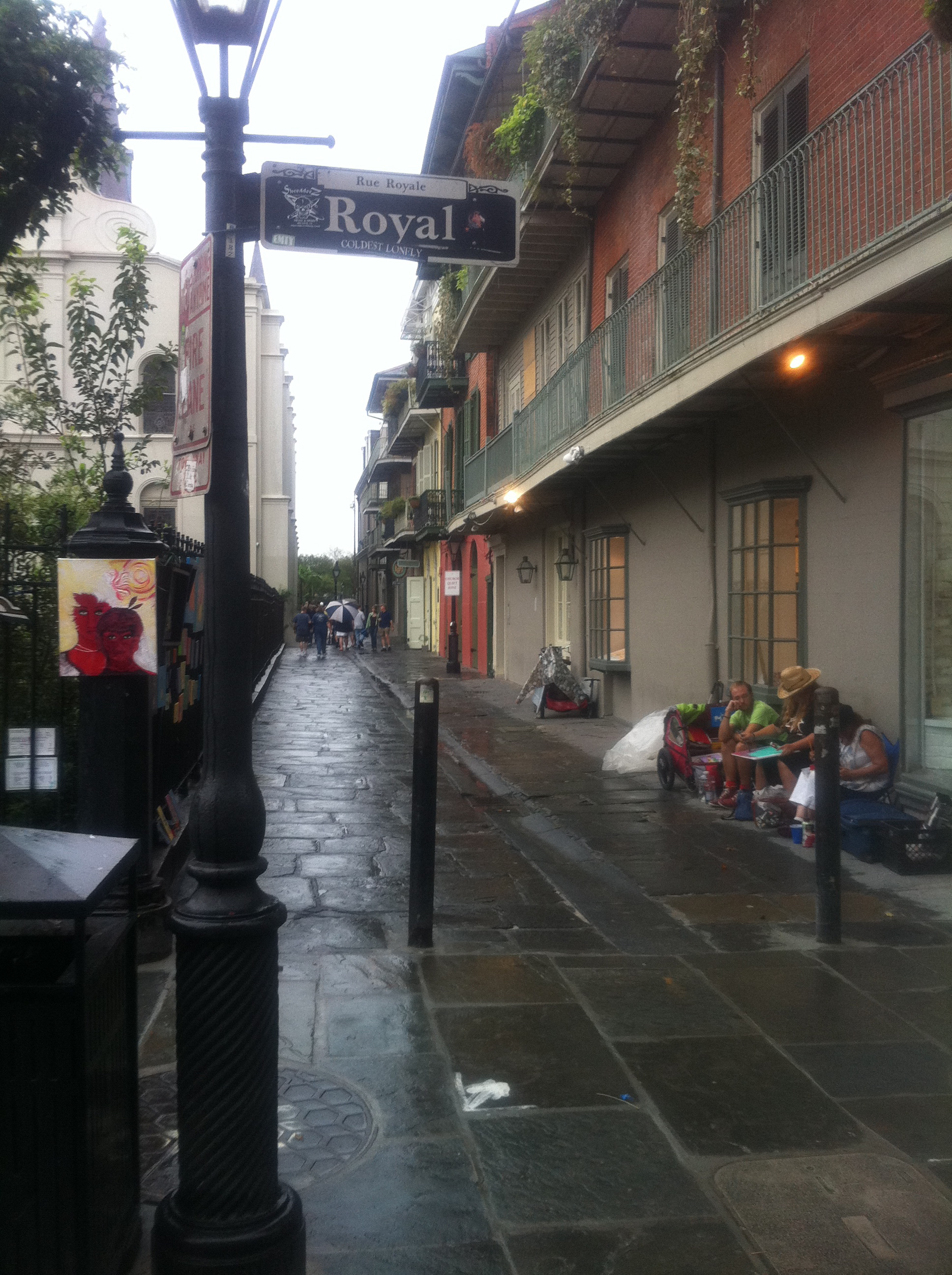
On Frenchmen Street, we went into the Spotted Cat Club to hear one group. It was standing room only. In fact, we were held up by the sardine-like crowd and could not have fallen down if we had tried. But the band was surprisingly good, especially the young woman singer who also played a mean trumpet. Best of all was the bassist, who did all his playing and solos slap bass style. With this technique, one slaps the strings or more typically pulls them out from the fingerboard so they slap back percussive style. In our family we hold the bass as a sacred instrument. Several of us play it—my brother--Rod, me, Christopher, his wife--Laura, and Ethan. However, only Ethan, can do some semblance of slap bass and certainly not with the speed shown by this guy. When a New Orleans jazz band really lets loose, they play counterpoint that would make Bach smile—my favorite part. This band could let loose.
Despite the crowd in the club, there was a little space left for a few dancers. One couple danced as if they knew and felt each other’s every move and emotion. They melded as one as they did some style of swing dancing. I think they had danced together before, perhaps for all their waking hours, all their lives. I was mesmerized watching them.
Later, we went to a blues club and listened to a blues band that sounded like they came from Memphis or maybe Chicago.
We did hear a little Cajun-zydeco. The confluence of cultures in New Orleans created not only their special mix of creole cuisine but also their special style of creole music. Added to this is the food and music contributed by the Cajuns. They originally came from Acadian regions in Canada, particularly from Nova Scotia. They were French Canadians who were driven out and as refugees settled in the bayous surrounding New Orleans. They still speak a French dialect with a mix of what? English, Spanish, Creole, or all three? I am not clear on the true differences between Cajun and zydeco music. I think Cajun music is older and more acoustic; they use more fiddle; whereas zydeco seems to have more Caribbean influence and uses some electric instruments. But they both use the accordion, the Cajun-zydeco instrument supreme, and washboard played with spoons. One time, I heard a most wonderful rendition of Jambalaya, written by Hank Williams of country music fame, played by the Mudbugs Cajun and Zydeco Band. (The term mudbugs is a nickname for crawfish.)
Ah yes, the music never stopped. It swirled around in our ears and heads.
A Break from Food and Music
To quiet our swirling heads and also take a break from the rain, we completed several Watson boys’ contests. Because it was my birthday celebration, I got to write a quiz for my sons. Which one could correctly complete the most musical (lyric) quotes from songs on their dear old dad’s favorite music list? I had an even dozen entries, and my youngest son, Ethan, won with eight correct answers. I will give you a few questions. See how you can do (answers provided at the end of Part 1).
1. When the band you’re in starts playing different tunes, where will Pink Floyd see you?
2. What is Mick Jagger’s favorite flavor?
3. According to the Eagles, at the Hotel California, you can check out any time you want, but what?
4. Jimi Hendrix asked to be excused while he did what?
When my son, Steven, was a little kid he started playing the “Would you rather” game. He was obsessed with it, and we have played it ever since. As a kid, his questions went something like this: “Would you rather eat live worms or moldy dog food?” They progressed to this level (from a few year’s back): “Would you rather have tattooed on your chest the name Madonna or the name Barry Manilow?” So our contest consisted of seeing who could come up with the best “Would you rather.” Ethan won with this entry: “Would you rather have a penis the size of your nipples or nipples the size of your penis, and you couldn’t have reconstructive surgery?” That’s a tough one.
One misty day, we decided to try to find a streetcar named Desire. I learned that Desire was the name of a street, and thus that one streetcar line had Desire written on the front of the car (its destination on the Desire line). But, alas, the Desire line no longer exists. So instead we took the St. Charles Street line to the Garden District to view some of the beautiful homes and visit one of the famous above ground cemeteries--Lafayette Cemetery. As mentioned earlier, New Orleans has a problem caused by the low-lying city and the high water level. I don’t think one can dig down more than a foot in New Orleans without creating a pond. Thus the cemeteries are above ground. I have to confess that we probably didn’t show a proper degree of reverence while visiting Lafayette. Rather, we acted like we were in a labyrinth in a video game.
While there we met a young couple that asked us to take their picture. We got to talking to them and learned that they lived in Connecticut but that the woman grew up in New Orleans. They had recently been married there and had decided to have a Voodoo wedding. They mentioned having great food, brightly colored clothes, good music, and some ritual ceremonies and blessings. But they refrained from spreading chicken blood on the bride and groom. (Actually, I made up that last part about the chicken blood; I don’t know what they do at a Voodoo wedding. But how cool is that that we met a couple in an above-ground graveyard that just got married in a Voodoo wedding?)
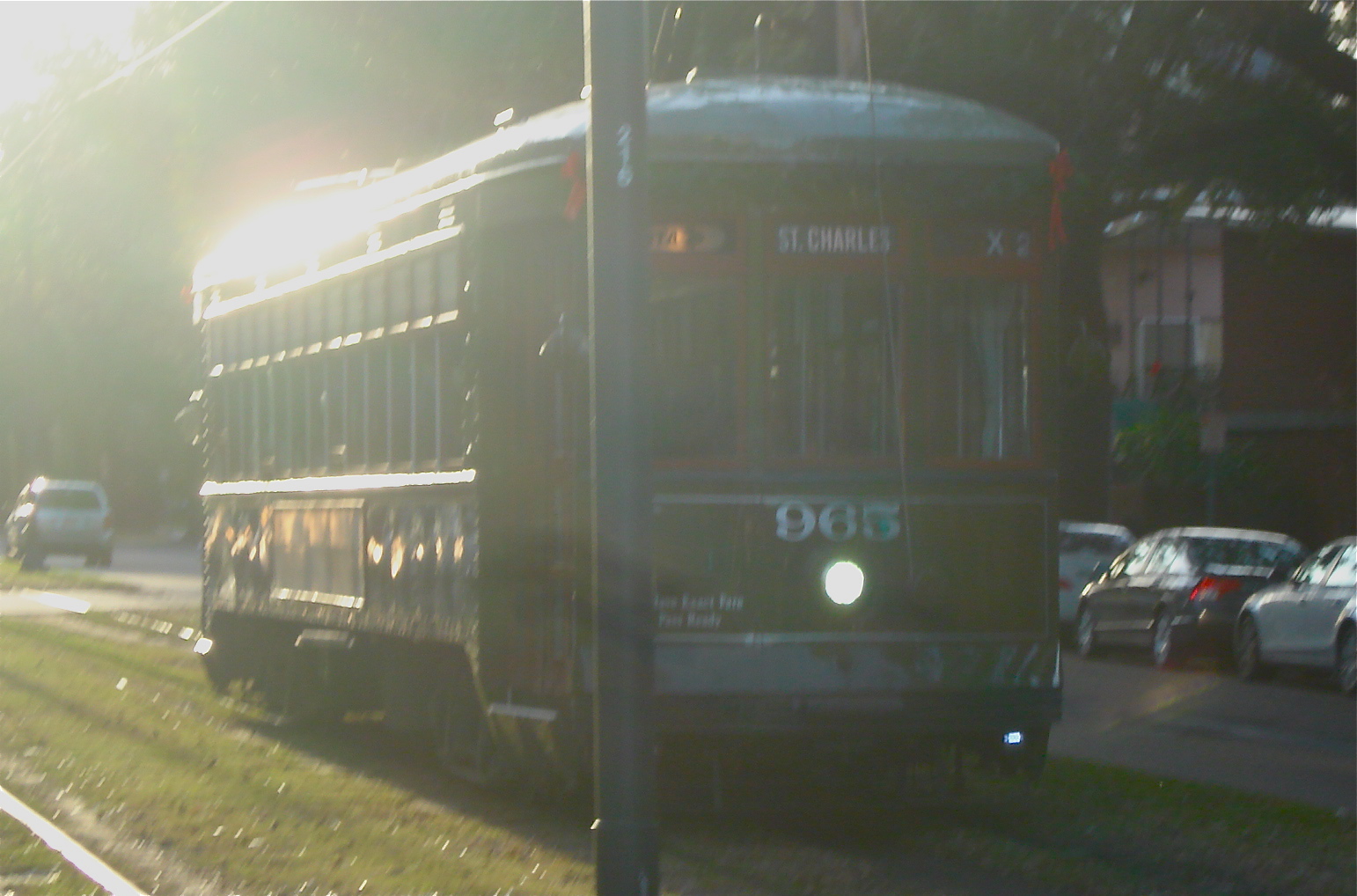
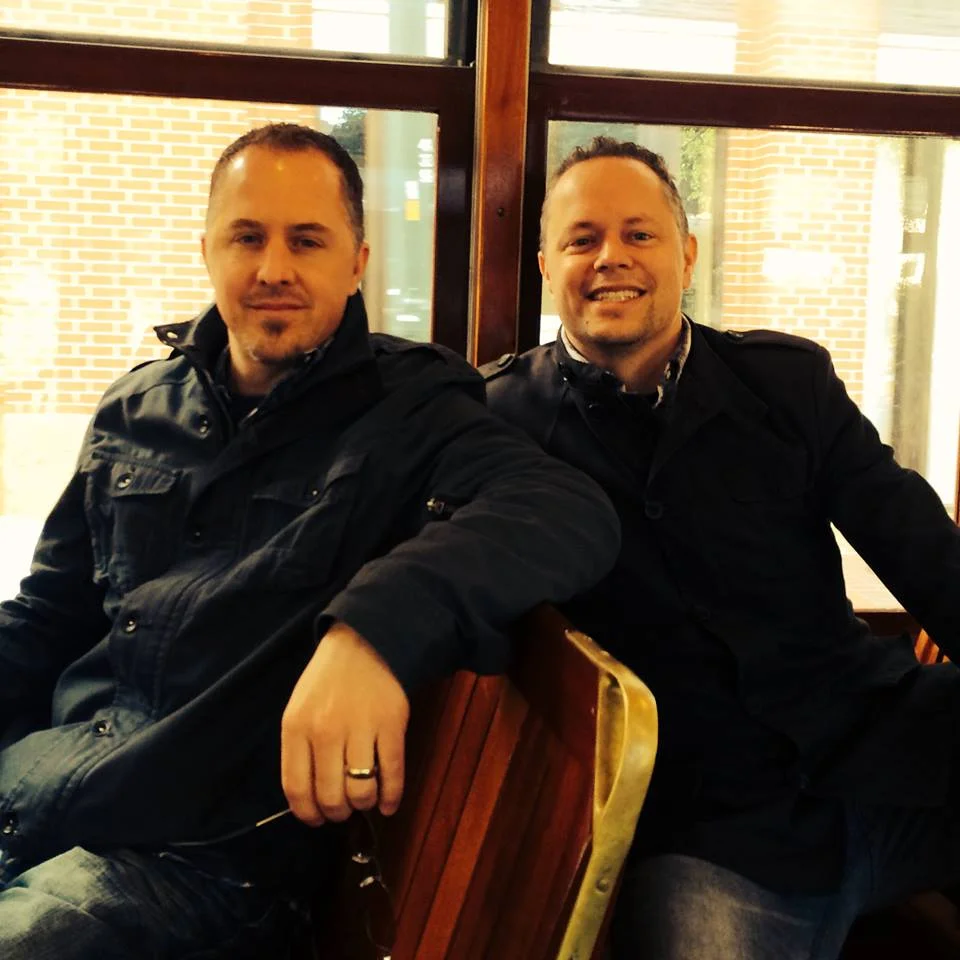

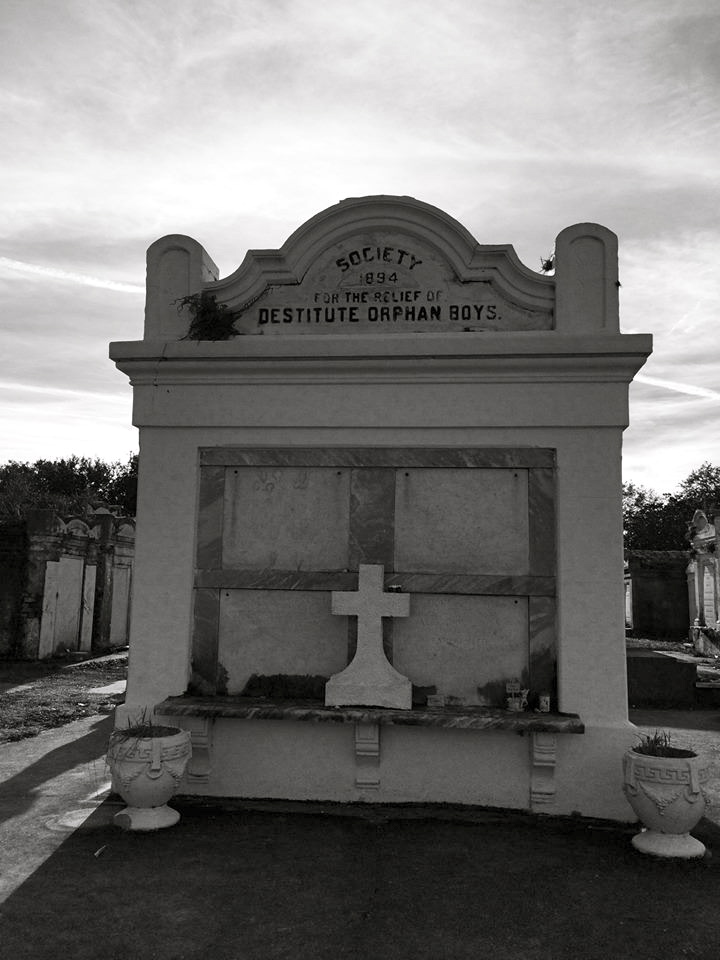
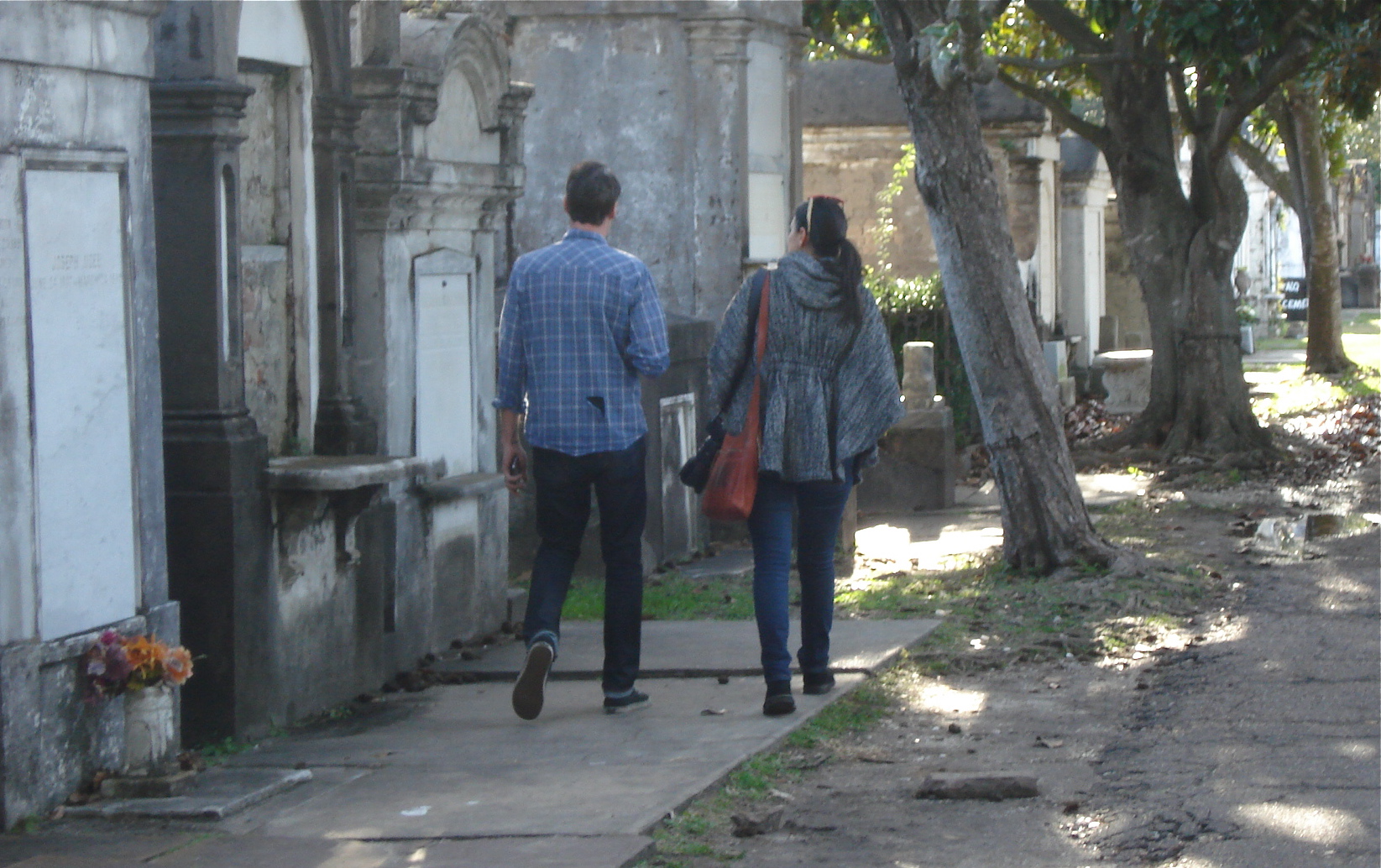
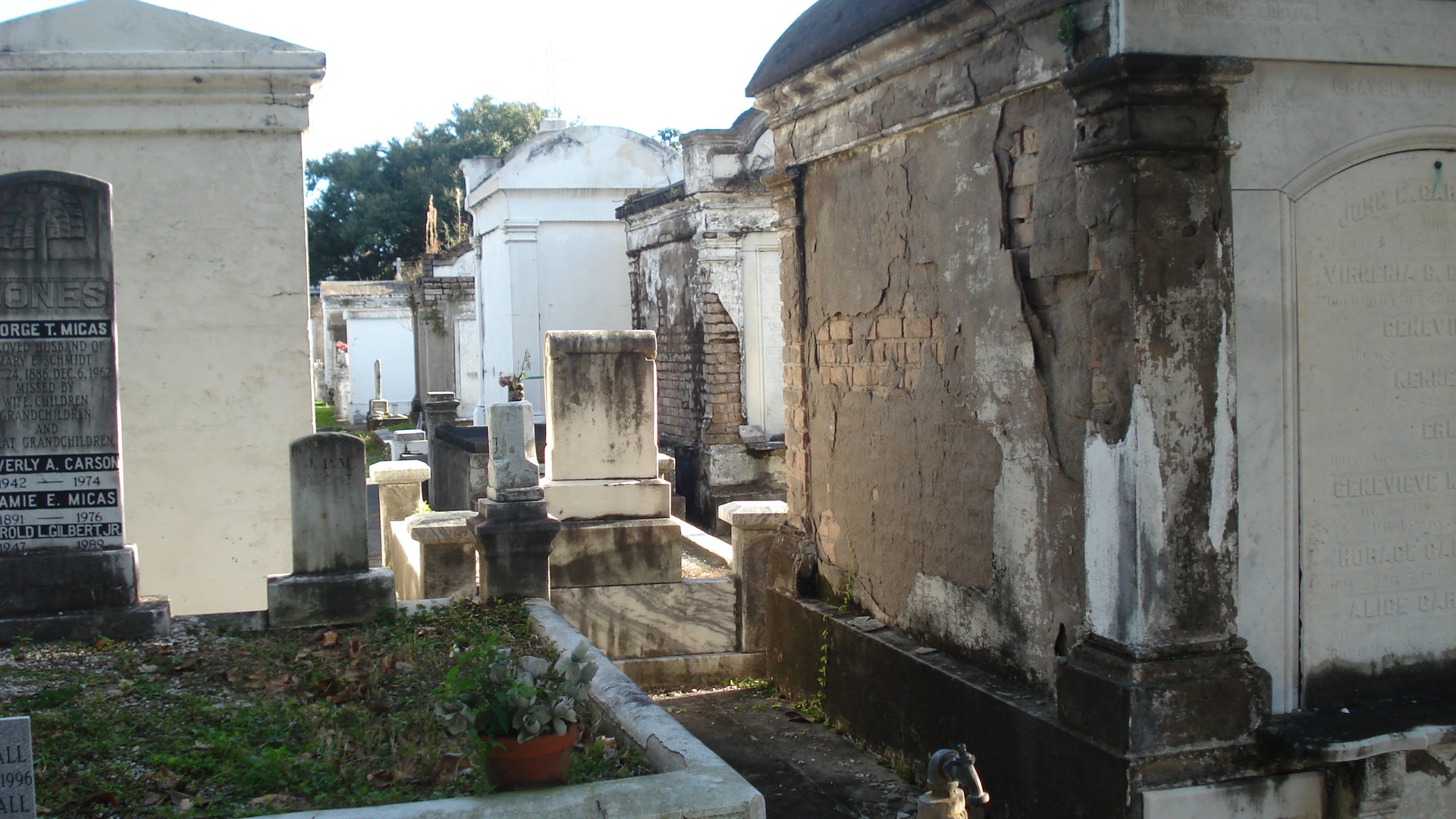
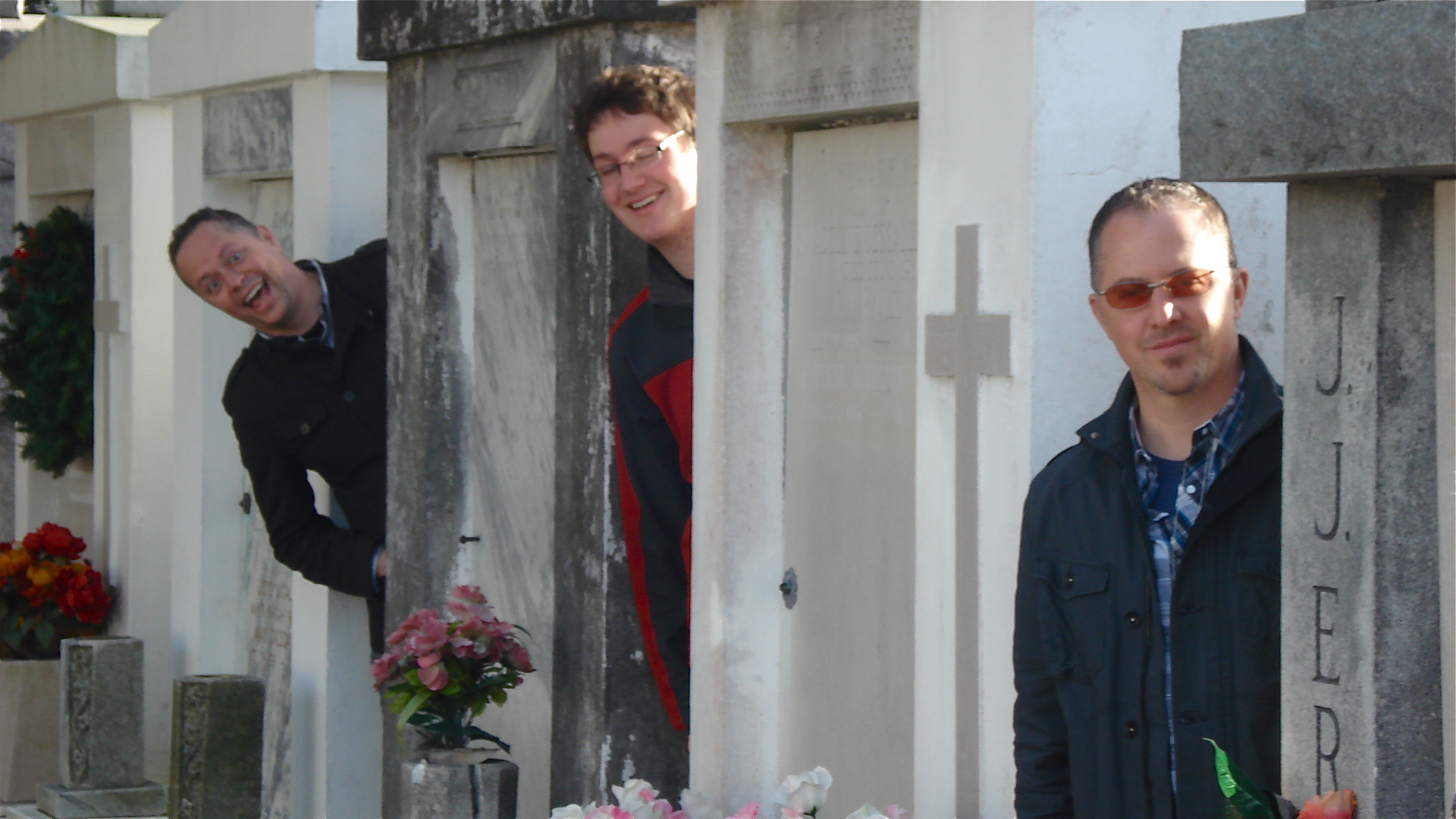
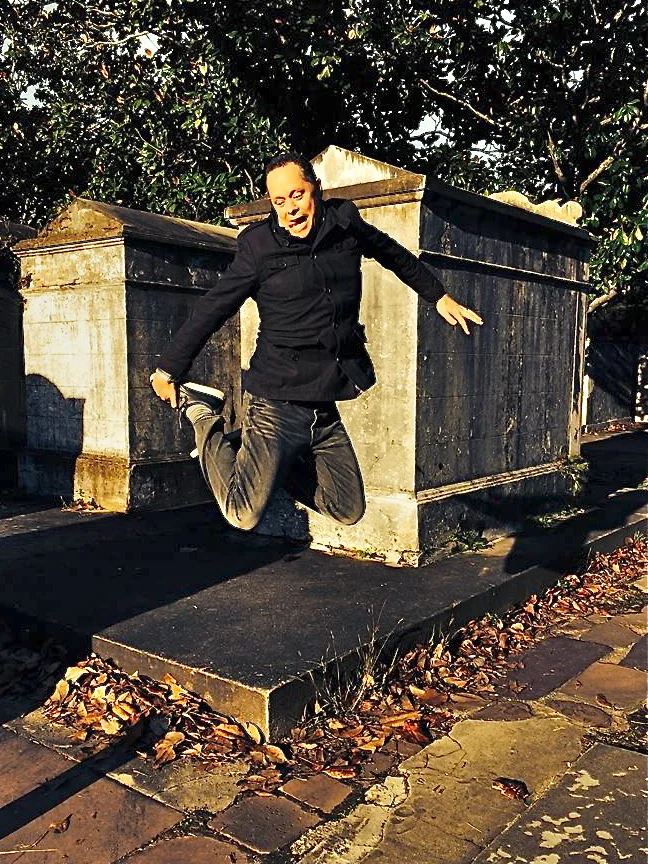
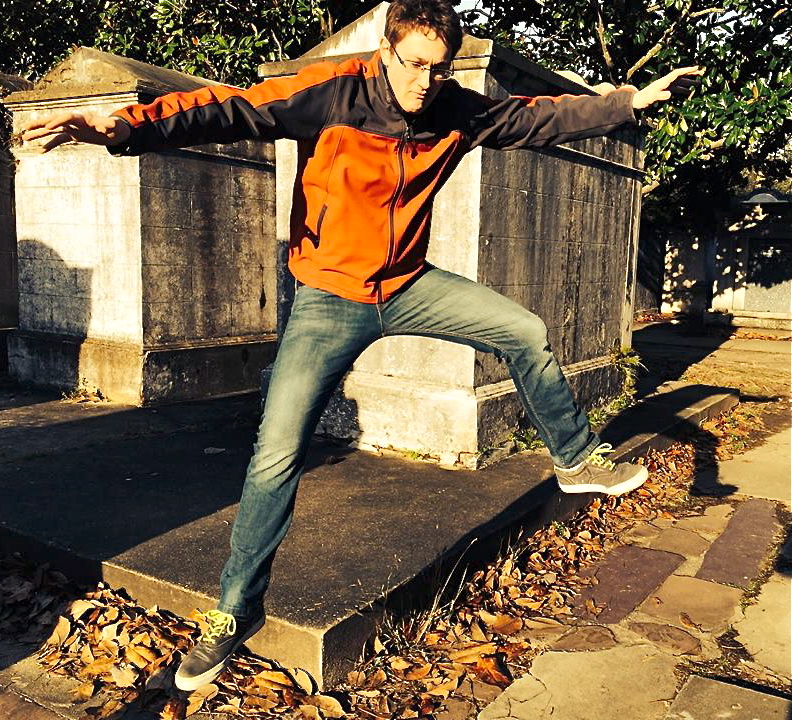
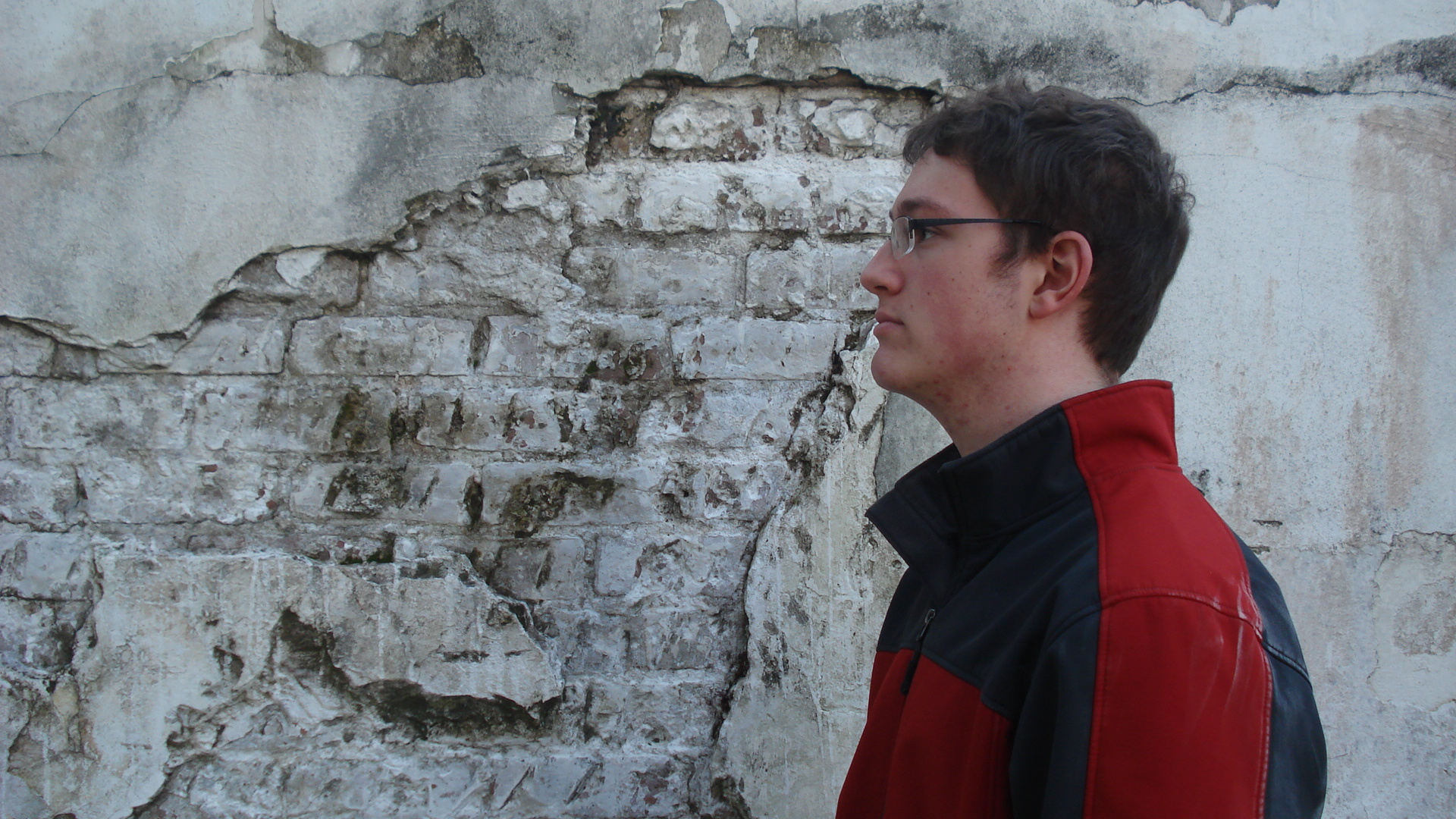
Adventures with Gerald and Frank
To escape the rain one afternoon, we decided to see the latest Hobbit movie. Like us, the entire City of New Orleans had decided to escape the rain the same way, and we couldn’t find a movie that was not sold out. So we hailed a taxi to take us across the river to the southwestern suburb of Algiers to a movie theater in a regular mall. And thus began our adventures with Gerald and Frank.
Gerald, our cab driver, had no ability to stop talking or to utter a phrase without dropping several f-bombs. I wish I could repeat his monologue, but I am trying to keep this clean and civilized. With my bleeps added, it started something like this. “So what all you guys doing visiting bleep New Orleans in December in this bleeping rain? Why bleep bleep do you want to go to the bleeping west side of the bleeping Mississippi?” You get the picture. Let me see if I can create his patter without all the rough language and annoying bleeps.
“So you here all four of you? [There were actually five of us, but he didn’t count carefully.] You could find some nice girls. You know once I had a cab full of people already and this young woman wanted to get in. I wouldn’t take her so she pulled up her blouse and stuck them on my windshield.” I said, “Gerald, watch your language. I’ve got my sons in the car.” “Well they know what I am talking about.” “Well one of them is still in high school; so don’t talk like that.” “Well, ok, but he has to learn. You leave him here in New Orleans for awhile, and he will call home and say, ‘Dad, I think I want to stay here a little longer,’ if you know what I mean. OK, OK, I know how it is with sons. I have two of them, but they little guys, not big like your sons. [It is true that John, Steven, and Ethan are all six feet and over.] Man, what you feed them? My sons are never gonna’ grow. I bet you go out hunting with your sons; hunting bear. Shoot him in the leg and knee and look at all that gravy pour out and feed it to your boys. They are big. I have a daughter. She’s the right size, real cute, but, Man, I will take my boys over daughters. Daughters are tough. I take her shopping and buy her stuff, and she says, ‘Daddy, we haven’t been in this store yet; Daddy, we need to buy something over here; Daddy, you need to get me these boots.’ Man, those daughters will wipe you out. Hey, I don’t know where I am. Where we going? I don’t drive over here to the west side too much. Why you want to go over here anyway? This place is dangerous. Somebody gonna’ pull a knife on you or shoot you with a gun. I wouldn’t get out over here. I be afraid to walk around in this rough neighborhood. But, hey, you need a ride back, you call this number. I’ll come and pick you up ‘cause otherwise you be stranded over here. There ain’t no taxis over here. But they probably won’t hurt you with those big sons of yours. You know I could line up your high school son with John Goodman’s daughter. I know where John Goodman is staying. He’s a good guy, and his daughter is a knockout. You should try to meet him and have your son lined up with his daughter. I can tell you where he is on the way back.” And so it went.
The mall we were at looked like every other middle-class mall. Nice people, no knives, no guns. And we called a local cab that came right away to take us back to the French Quarter. This time our driver was Frank. A big, heavy guy who had moved out of New Orleans to live in Seattle for awhile. He talked to Steven about Seattle. He talked about the New Orleans Saints and old cars and hunting. He had a red neck. And he talked about how cold it was right now in New Orleans and how he hated the cold but he still would not wear anything but shorts. I looked over and saw that he was wearing shorty shorts that barely covered his big fat legs. He said he didn’t drive to the French Quarter too often. It was too dangerous. You might get knifed or shot. After he dropped us off at our hotel, we didn’t see anyone with knives or guns.
And so our New Orleans visit came to an end. The last night, we held our last contest. We had decided that on Christmas Day all of us would shave and would not shave again until after New Orleans. We had a beard-growing contest. Well, the Watson guys are not all that hairy, and not one of us looked like we could win, but we did decide that Steven came in first.
Early the next morning, we parted ways, but not before Steven came down to breakfast in his pajamas. Earlier we had run into the bridesmaids at a wedding party who were staying in our hotel, and they had all come down to breakfast in matching pajamas, actually sleepers with feet. Ethan was particularly impressed with how cute they were. So maybe that is what gave Steven the wish to eat breakfast in public in his jammies.
It was hard to part; it was fun while it lasted; we will probably all go back again.
And so, as a farewell, Steven created a Venn diagram that does capture our view of New Orleans.
And here are the answers to the Musical Lyrics Quiz:
1. On the dark side of the moon.
2. Cherry Red.
3. You can never leave.
4. Kissed the sky (“Kissed this guy” is also an acceptable answer.)












